|
The material on this website is intended for educational use only and may not be reproduced for commercial purposes without express permission from the appropriate copyright holder.
Le contenu de ce site Web est destiné à des fins pédagogiques seulement et ne peut être reproduit à des fins commerciales à moins d'en avoir obtenu la permission du titulaire du droit d'auteur approprié.

Nation's Business, Washington, D.C. , February 1925
"The fur trade was central to the development of Canada. . . High-value, low-bulk goods like furs [meant that] the fur trade remained a dominating influence in Canadian history for more than two hundred years."
Harold Innes
"[Recent] research has altered the image of Aboriginal peoples from one of passive and historically unimportant participants in processes they could neither understand nor control to one of people who were willing, shrewd, sophisticated and historically decisive partners in commercial and social relationships over which they exerted considerable influence. . . It placed aboriginal people at the centre of the historical action."
Arthur J. Ray
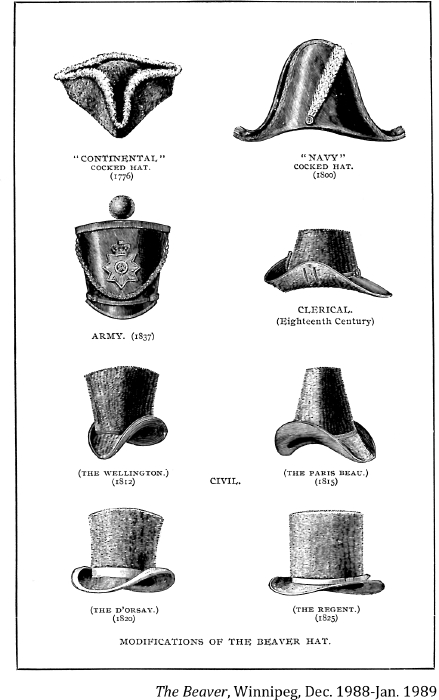
Beaver hats, LAC nic000710-v6
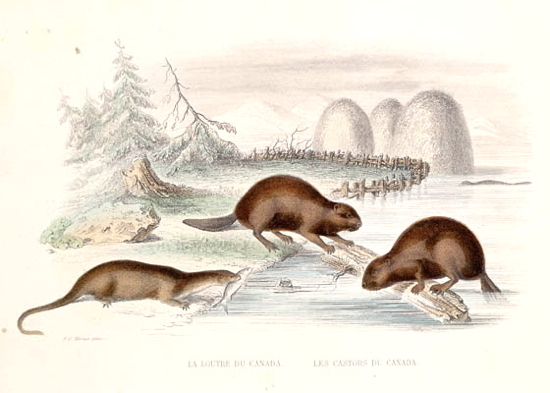
La Loutre du Canada, Les Castors du Canada (Otter of Canada, Beavers of Canada). LAC, Acc. No. R9266-2555, Peter Winkworth Collection of Canadiana, Jacques Christophe Werner 1798-1856
"Canada was built on dead beavers."
Margaret Atwood, interview, 1988
"What history encourages us to do is to remember the hindrances that Native people posed to the forward momentum of European migration, even though Native people were more often an assistance, showing Europeans river systems and trade routes, taking them around the neighbourhood and introducing them to family and friends. . . Popular history for the period tends to ignore this and focuses instead on the trouble Indians caused."
Thomas King, The Inconvenient Indian
"The newcomers were welcomed. They were taught how to survive by the Aboriginals. How to dress. How to eat to avoid scurvy . . .The most important Canadian business – fur trading – was reliant on close and steady relationship with the First Nations."
John Ralston Saul

1663 ? Les pelletiers à Montréal. The Fur Traders at Montreal. LAC, Acc. No. 1990-329-1, George Agnew Reid 1916
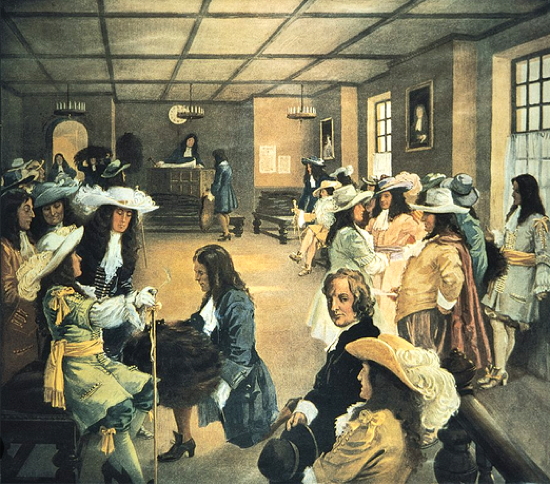
Public sale of traded furs, courtesy of the Hudson's Bay Company.
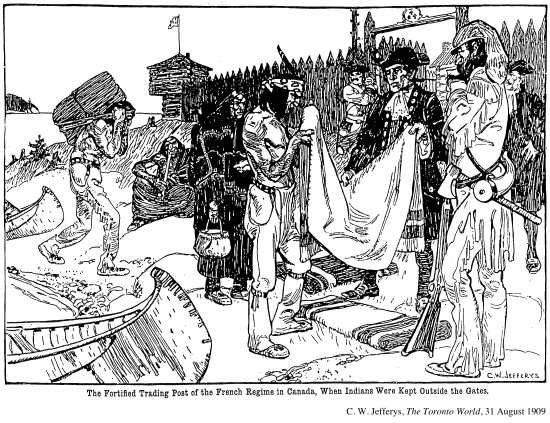
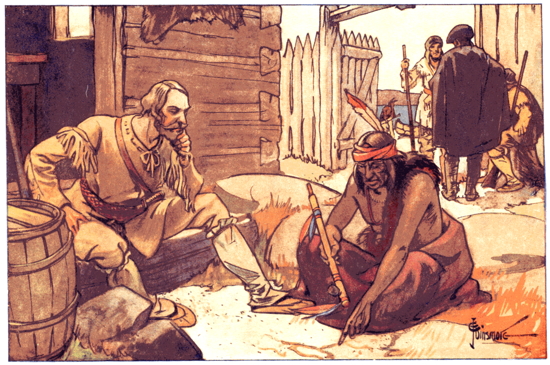
A Clue to the Western Sea, E. J. Dinsmore, A Picture History of Canada, 1942
"The canoe . . . was to be used as our principal means of transportation – personal, governmental, military and commercial – for several centuries. Why? Because the First Nations had developed the appropriate means of transport for our road system, that is, our rivers and lakes."
John Ralston Saul, A Fair Country, p. 38
"Canada was committed totally to the fur trade, and the fur trade drove the fur-bearing animals before it, dragged Canada forever deeper into the West, sapped its strength . . . and infallibly assured the victory of the English."
Bruce Hutchison
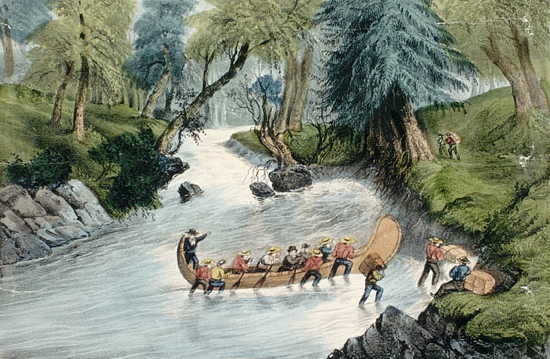
Canadian Voyageurs Walking a Canoe Up a Rapid. Voyageurs canadiens poussant un canot dans un rapide. LAC Acc. No. 1934-380-1, William Henry Bartlett, 1870-73
"Voyageurs occupy a central place in the mythology of nation building; by being friends with Aboriginal peoples and learning the skills necessary to thrive in the wilderness, they opened the way for later settlers."
Carolyn Podruchy

Burial Place of the Voyageurs. William Henry Bartlett, LAC C-040707, 1841
"Inland hiverants or winterers who spent whole years in the fur trade country were distinguished from the mere mangeurs du lard, 'porkeaters,' who travelled the familiar and established supply route between Montreal and Grand Portage [later Fort William] in Lake Superior, the rendezvous point to which the winterers brought their fur returns for transport to Canada."
Jennifer S. H. Brown, Strangers in Blood. Fur Trade Company Families in Indian Country
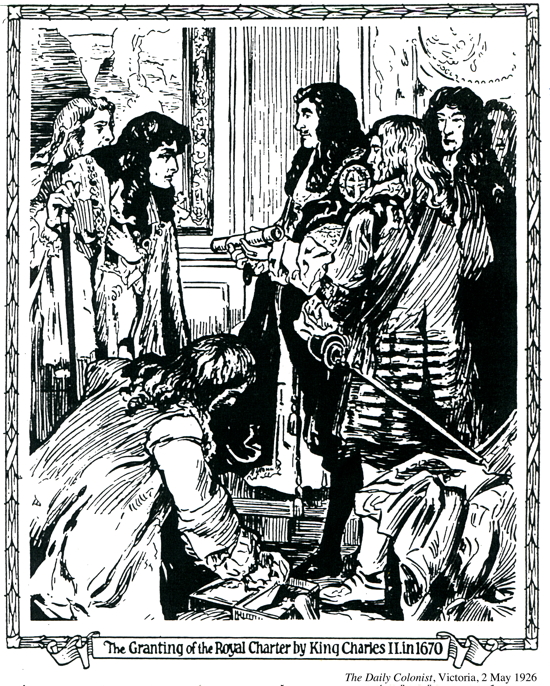
1670 Le prince Rupert lisant la charte octroyée le 2 mai 1670 aux dirigeants de la Compagnie des aventuriers faisant du commerce dans la baie d'Hudson. Prince Rupert reading charter granted May 2nd, 1670, to the directors of the Company of adventurers trading into Hudson's Bay.
The Company The Rise and Fall of the Hudson's Bay Empire, Stephen R. Bown
https://www.tvo.org/video/the-indigenous-origins-of-the-bay
"By the 18th century company ships [HBC] had formed a habit of stopping at Stromness in the Orkney Islands for last-minute supplies before starting their transatlantic crossings . . . The company . . . found several advantages in hiring Orkneymen. Not only would they accept lower wages and a lower standard of living than Londoners; they also shared Scotland's relatively high literacy rates. Many of the men were able to handle simple fur trade accounts and record keeping."
Jennifer S. H. Brown, Strangers in Blood. Fur Trade Company Families in Indian Country
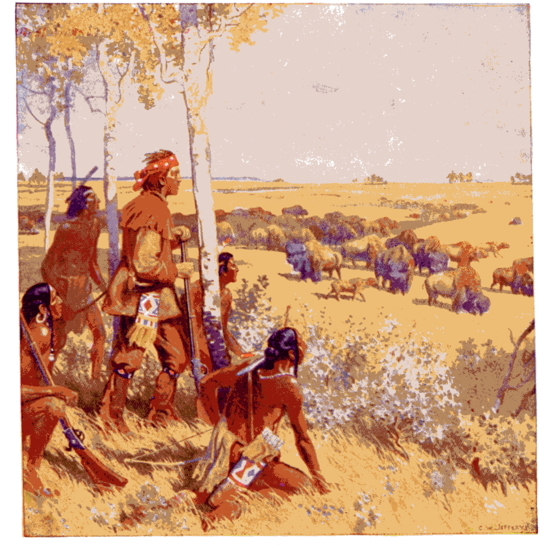
1691 Henry Kelsey sees the buffalo on the western plains, A Picture History of Canada. Charles William Jefferys 1920s or 1930s?
"The arrival of Europeans in the North American interior did not mark the beginning of Great Plains history but rather connected 'two worlds of equal maturity.'"
Bill Waiser, A World We Have Lost
"What constitutes geographical exploration and discovery? It doesn't seem that an individual being led through a land by the land's occupants should count on discovering it, except in a personal sense. ['Explorers' and their] . . . team should more accurately be called travelers. They were not exploring a land devoid of inhabitants; they were touring distant, populated lands for eastern economic interests."
Stephen R. Brown, The Company The Rise and Fall of the Hudson's Bay Company.
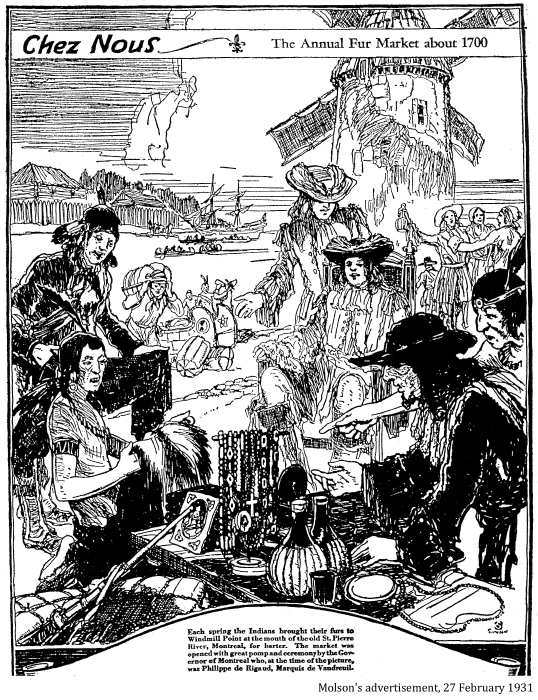
"'Women,' added he [Matonabbee, Hearne's Chipewyun guide], 'were made for labour; one of them can carry, or haul, as much as two men can do. They also pitch our tents, make and mend our clothing, keep us warm at night; and, in fact, there is no such thing as travelling any considerable distance, or for any length of time, in this country, without their assistance. Women', said he again, 'though they do every thing, are maintained at trifling expense; for as they always stand cook, the very licking of their fingers in scarce times, is sufficient for their subsistence.'"
Samuel Hearne, Oct. 1770
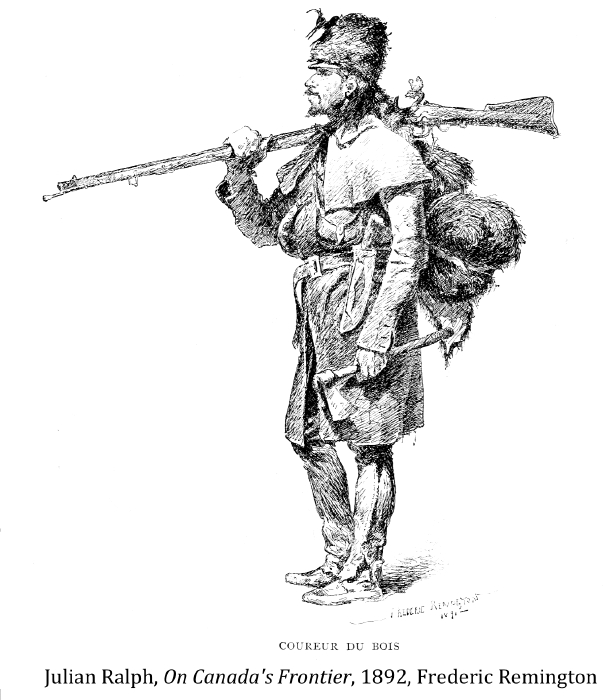
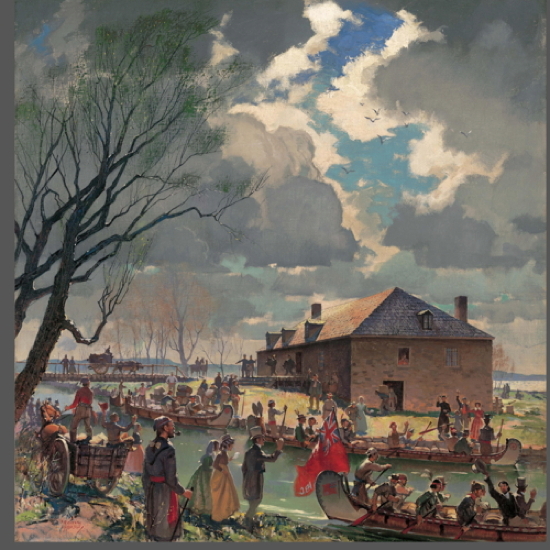
The Spring Fur Brigade Leaves Lachine for the West, HBC Heritage, Frank Arkbuckle
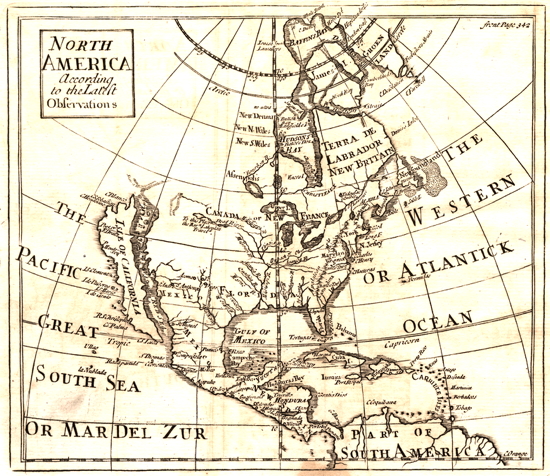
North America according to the latest observations, 1722, Digital Archives Ontario

Discovery of Coppermine River by Samuel Hearne 1771, Frank Johnston, artist, ca 1922, Public domain, via Wikimedia Commons
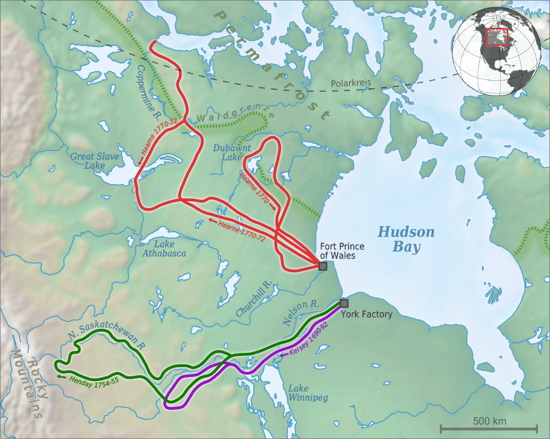
Hudson Bay Exploration Western Interior map, Alexrk2, CC BY-SA 3.0 <https://creativecommons.org/licenses/by-sa/3.0>, via Wikimedia Commons
"The men of Hudson's Bay . . . did not try to convert the Indians to Christianity or to a 'civilzed way of life . . . [nor did they] engage in slavery."
Jack Weatherford

Captain Cook meets the West Coast Indians at Nootka, 1778. LAC Acc. No. 1972-26-765, Charles W. Jefferys, 1920s or 1930s [Cook's men traded for sea otter pelts. They needed them because they were headed for the Arctic. They later sold them for a huge profit in China. When Cook's journal was published it set off a "gold" rush for furs to the Pacific Northwest coast.]
"Sea Otter skins which did not cost the purchaser sixpence sterling sold in China for 100 dollars."
John Ledyard, The Last Voyage of Captain Cook, 1783. [Ledyard was a crew member on James Cook's last voyage. His memoirs helped set off a stampede of fur traders to the northwest coast of North America.]

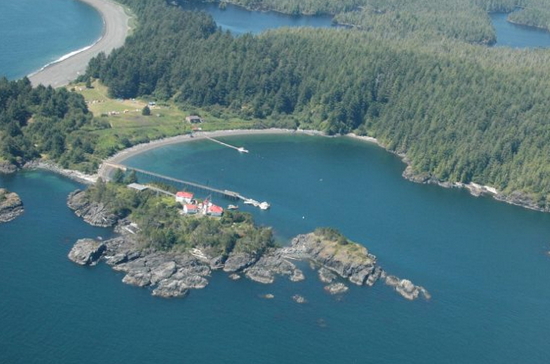
Friendly Cove

The Launch of the North West America at Nootka Sound. La mise à l'eau du North West America à la baie Nootka. LAC Acc. No. R9266-3477 Collection de Canadiana Peter Winkworth, Conrad Martin Metz, ca. 1790. [In 1788, John Meares, a maritime fur trader, built a schooner (the North West America) at Nootka Sound to help with the sea otter fur trade. This exaggerated drawing of the British settlement at Friendly Cove was used to strengthen Britain's claim to the territory.]

Spanish at Friendly Cove 1789
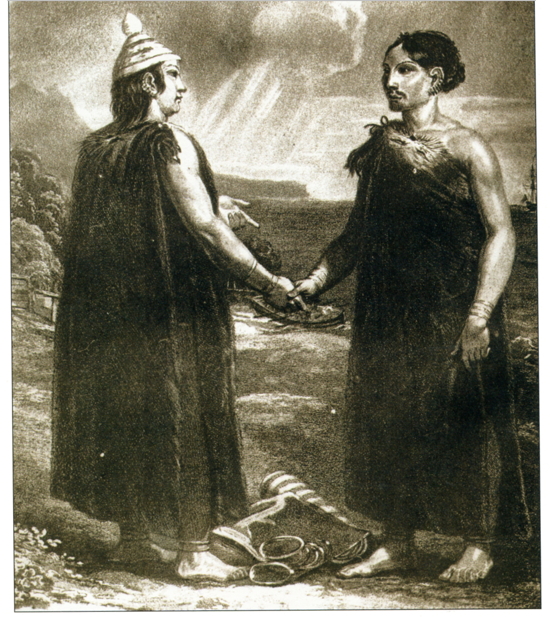
Callicum and Maquilla. Chiefs of Nootka Sound. LAC C-027699, 1790

Captain Robert Gray, captain of the ship Columbia, wintered near Tofino, in 1791-92. He built a soop called the Adventure to take part in the sea otter fur trade.

Robert Gray wintered here in 1791-92


Histoire de la Nouvelle France, Euge`ne Gue´nin, La Nouvelle-France, Paris, 1900, Public domain, via Wikimedia Commons
"I dreaded the sight of a woman, for whenever any were present, they were sure to preside over and direct all commercial transactions, and as that was the case, I was obliged to pay three times the price for what in their absence, I could have procured for one third of the value."
Captain James Strange, Nootka, 1785
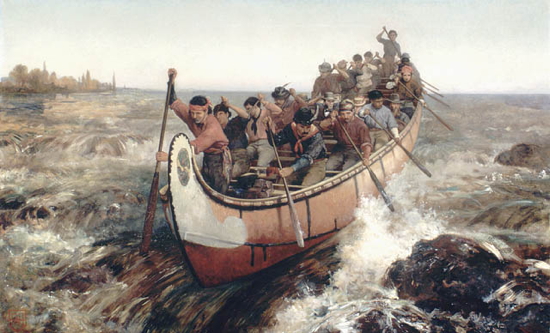
1800? Shooting the Rapids. Descente des rapides. LAC, Frances Anne Hopkins, Acc. No. 1989-401-2, c002774
"The canoe is to Canada what the horse is to the United States – the prime vehicle by which the land was first explored and first grasped imaginatively. American myths involve heroic rides, but the great Canadian journey is a canoe trip."
Wayland Drew, Saturday Night, 1978
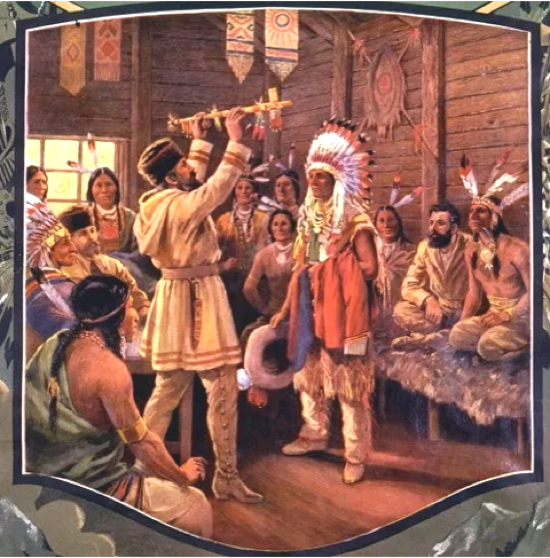
A pipe ceremony was held before trading began

1869 Canoe Manned by Voyageurs Passing a Waterfall. Voyageurs franchissant une cascade en canot. LAC, 1989-401-1, 1869
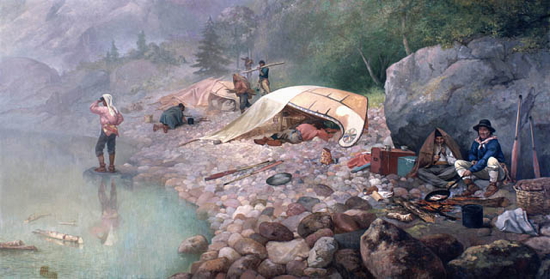
Voyageurs at Dawn / Voyageurs à l'aube. LAC, Acc. No. 1989-401-3, 1871

Indian trading furs, 1785. Traîteur de pelleterier indien, 1785. LAC, 1972-026-71, Charles W. Jefferys, 1920s or 1930s?
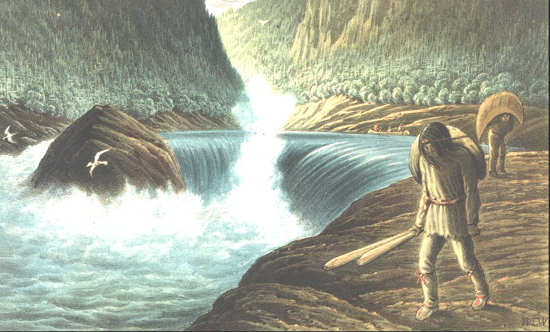
William Hind, The Third Rapid on the Moisie. LAC Acc. No. 1988-246-1, 1863
"Not only was the work of loading and unloading canoes, paddling, tracking, and portaging exhausting, but voyageurs also worked very long hours for weeks and even months at a time, as they raced against the fall freezing of waterways."
Carolyn Podruchy
"Packers worked long days and had to be ready for any eventuality or emergency –- trails washed out, relentless rain, broiling sun, unexpected snowstorms, an injured, ill or strayed animal, and cargo damaged or lost … the packers themselves always slept outside—even in rain and snow—in order to oversee their animals ... There were delays when downed trees blocked the trail or where detours around slides or washouts were necessary … it was a physically demanding job."
Susan Smith-Josephy with Irene Bjerky, Cataline The Life of BC's Legendary Packer
"The voyageur is not looked upon as a man who cannot carry two [90 pound packages]. There are many who even take three and out run their fellows."
Voyageur saying
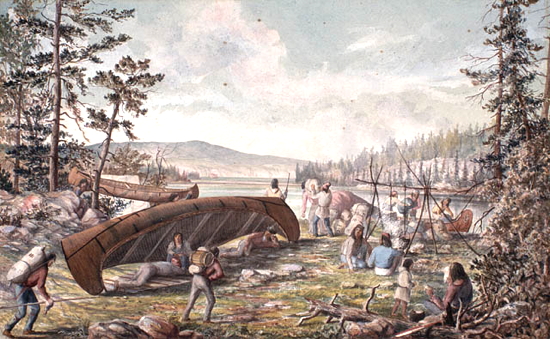
Indian Completing a portage. Indiens au terme d'un portage. LAC, Acc. No. 1970-188-2244 Purchased with a grant from the Secretary of State, William Armstrong 1873

Fort Edmonton. Fort Edmonton or Edmonton House, was the name of a series of Hudson's Bay Company trading posts from 1795 to 1891. The fort competed for business with the North West Company's Fort Augustus from 1795 to 1821. Fort Edmonton was the terminus of the Carlton Trail, the overland route for Métis freighters between Red River and the west. It was also an important stop on the York Factory Express route between Fort Vancouver (Oregon) and London, via Hudson Bay. LAC PA-009240, Charles Horetzky, 1871
"For countless generations its [the Hudson's Bay Company] customers, suppliers and contract workers were the Indigenous peoples who were also friends, associates, competitors, wives and extended family to all levels of Company employees."
Stephen R. Bown, The Company
[In 1823 a spring-loaded steel leg-hold trip was invented. It made it much easier to harvest beaver.]
"It is no mere accident that the present dominion coincides roughly with the fur-trading areas of northern North America."
Harold A. Innis, The Fur Trade in Canada
"No country under heaven is so completely adapted for internal navigation."
Statistical Sketches of Upper Canada, 1832

Indians Bartering. John Richard Coke Smyth, LAC acc. no. R13133-301, 1840
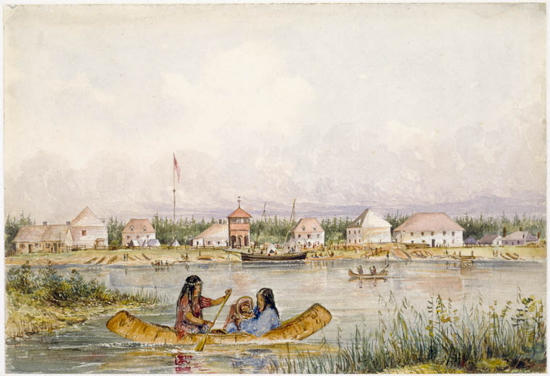
Fort William, Lake Superior, Canada West. Fort William, sur les bords du lac Supérieur, Canada-Ouest. LAC, Acc. No. 1968-115-1, Willam Henry Edward Napier 1857
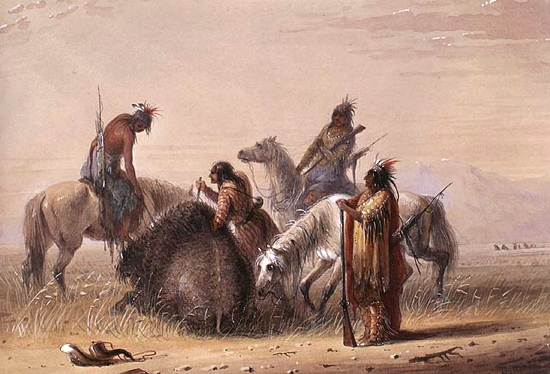
Camp Providers. Fournisseurs du camp. Acc. No. 1946-125-1 Don de Mme. J.B. Jardine, 1867

Buffalo Hunting in the Summer. Chasse au bison durant l'été. LAC, Acc. No. 1981-55-69, 1822

Camp Scene with Drying Buffalo Meat. Scène de campement avec séchage de viande de bison. LAC, Acc. No. 1963-97-1.49R, July 1862

Breakfast at Sunrise. Déjeuner au lever du soleil. LAC, 1946-131-1 Don de Mme. J.B. Jardine, 1867

A Young Indian Mother Fording a Stream. Jeune mère indienne traversant un ruisseau. LAC, Acc. No. 1946-126-1 Gift of Mrs. J.B. Jardine, Alfred Jacob Miller 1867
"The HBC built its networks . . . in good part through interracial marriages."
John Ralston Saul


Alexander MacKenzie Crossing the Rockies in 1793, Arthur Hemming


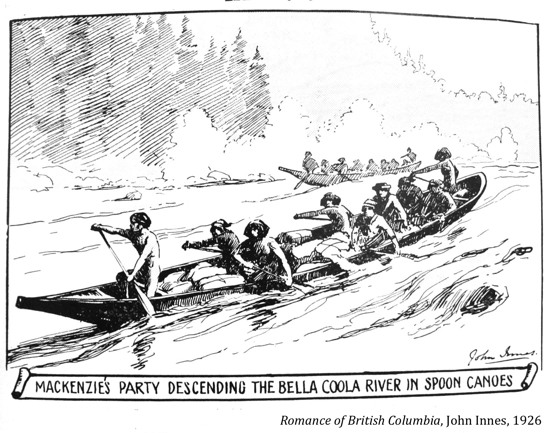
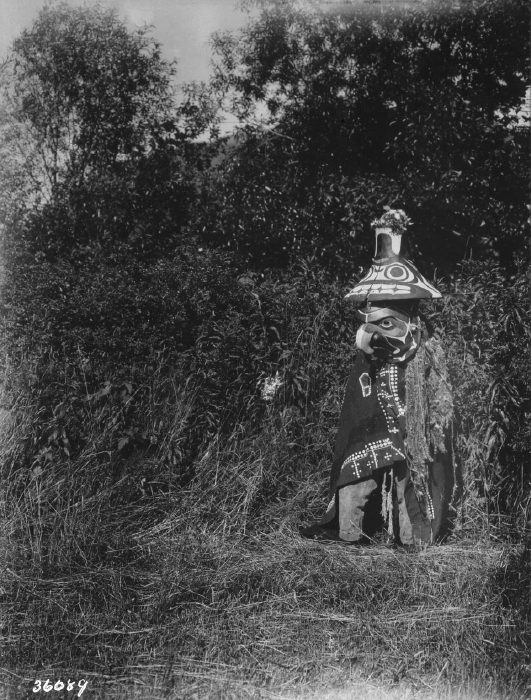
Masked dancer of Bella Coola Indian. LAC PA-, 1931

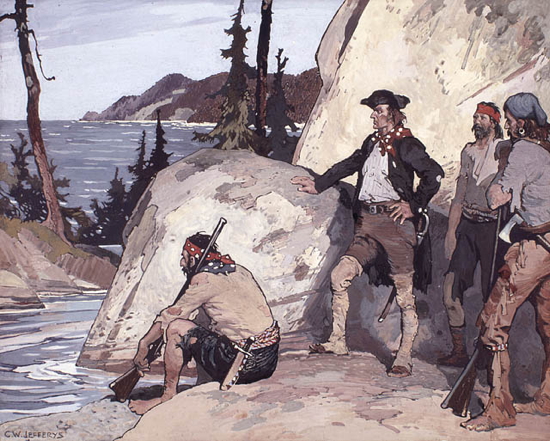
Overland to the Pacific, Charles W Jefferys, 1920s
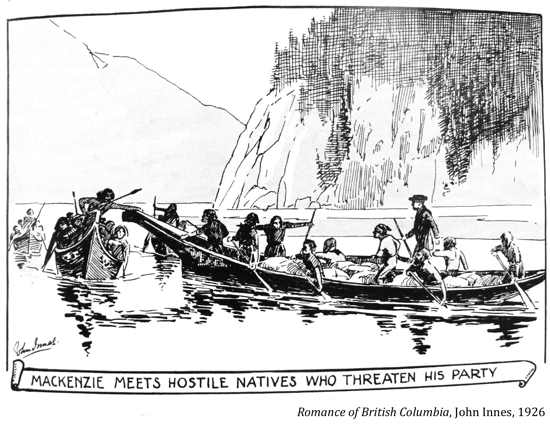
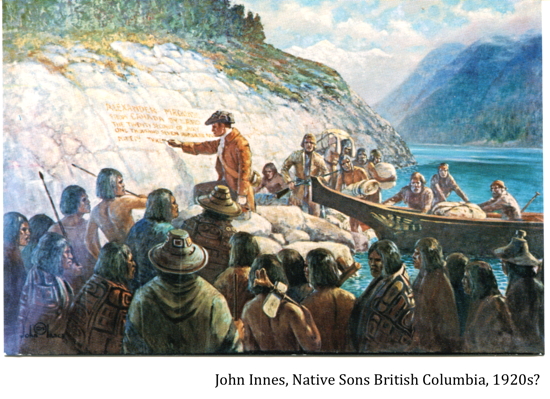

1785 Histoire de la Nouvelle France, Euge`ne Gue´nin, La Nouvelle-France, Paris, 1900, Public domain, via Wikimedia Commons
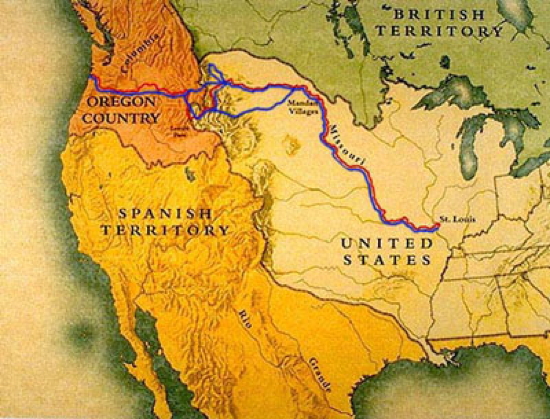
Lewis and Clark Expo Map, USA public domain, 1805-2005
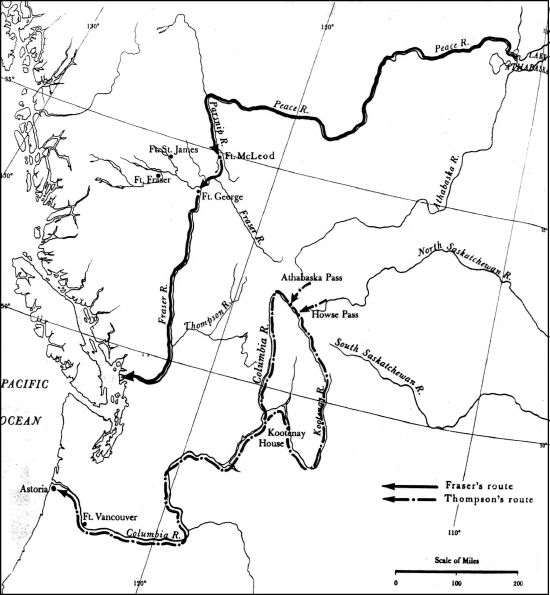


John Innes, Simon Fraser’s Canoes Descending the Fraser River & G.H. Southwell [http://www.vancouverisawesome.com]
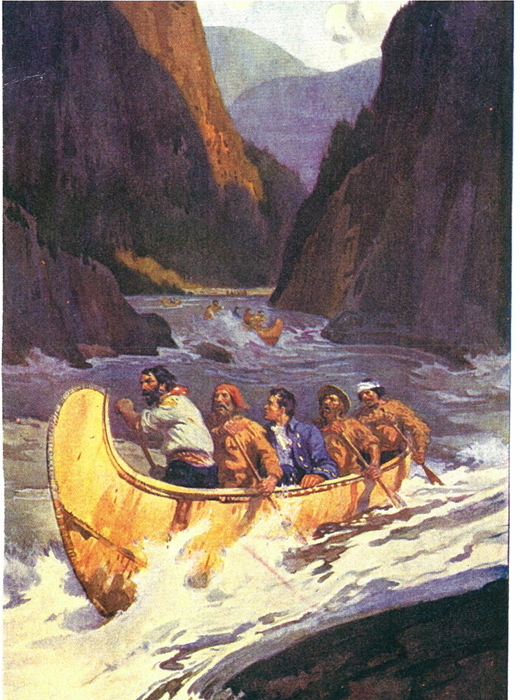
Charles W Jefferys Simon Fraser’s Canoes Descending the Fraser River, 1920 or 30s
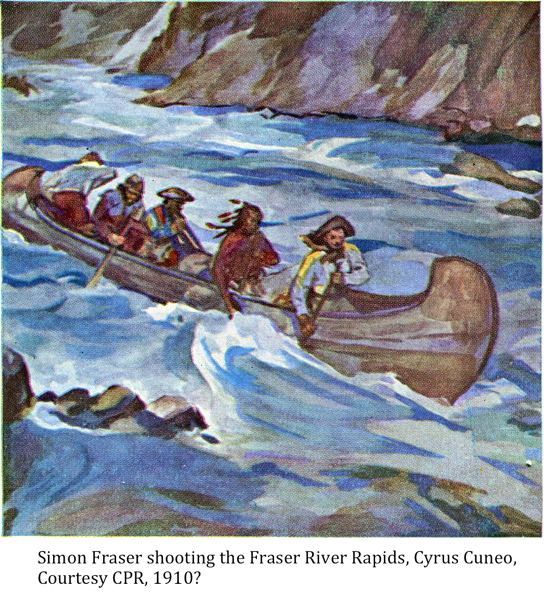
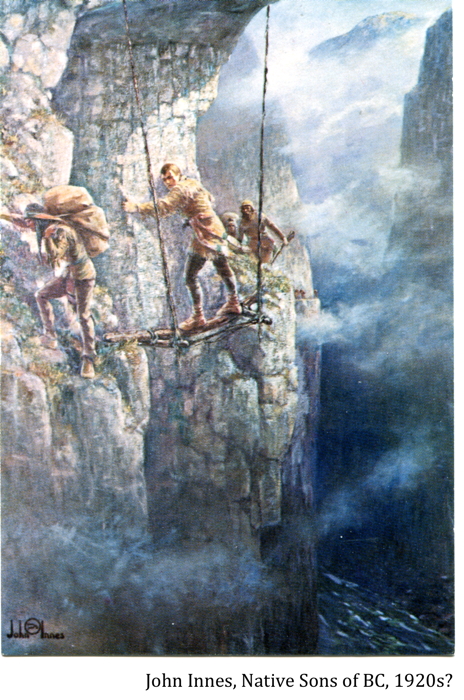

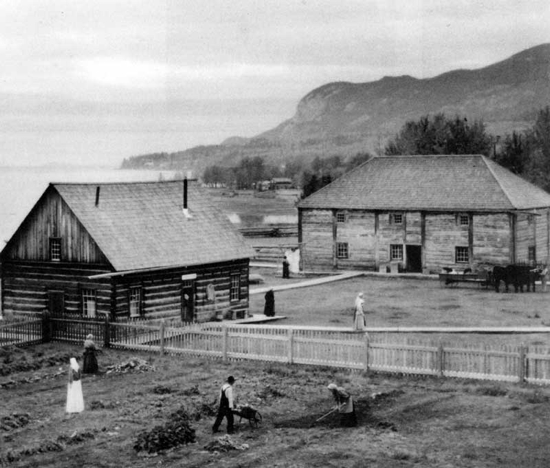
Fort St. James

Statue of David Thompson and Charlotte Small, Rich Roenisch, artist, Invemere, 2009
http://www.experiencemountainparks.com/charlotte-small-woman-of-historic-significance/
"The Northwest Company was the forerunner of Confederation and it was built on the work of the French voyageur, the contribution of the Indians, especially the canoe, Indian corn, and pemmican, and the organizing ability of Anglo-American merchants."
Harold Adams Innis



Winter couriers of the North-West Fur Company, book 1874 Internet Archive Book Images, via Wikimedia Commons.
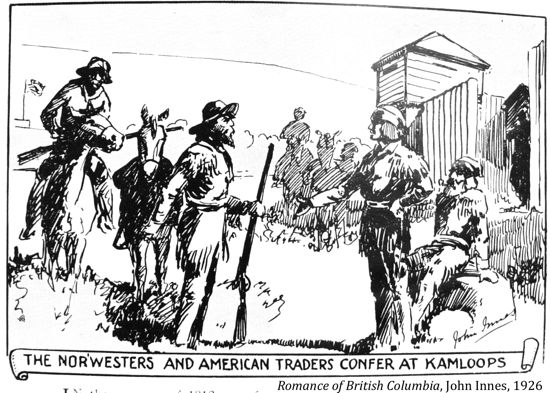
"Every inch of penetration westward by first francophones and then the Anglophones was dependent on Native support for guidance, food, tactics and negotiation."
John Ralston Saul, Reflections of a Siamese Twin

The Fight at Seven Oaks in the Red River Settlement. The incident led to the 1821 merger of the two fur-trading rivals – the North West Company (NW Co.) and the Hudson's Bay Company. The Métis fought for the NW Co. La bataille de Seven Oaks dans la colonie de la rivière Rouge. L'incident a conduit à la fusion, en 1821 des deux rivaux de traite des fourrures - la Compagnie du Nord-Ouest (CNO) et la Compagnie de la Baie d'Hudson. Les Métis qui ont combattu pour le CNO, ont appelé "la Victoire de Frog Plain» (la Victoire de la Grenouillère). LAC, Acc. No. 1972-26-779, Charles William Jefferys 1920s or 1930?
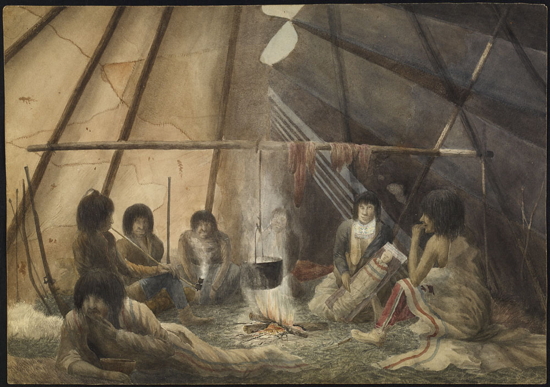
Interior of a Southern Indian tent LAC, R13133-441, Robert Hood March 1820

[In 1821 the British government granted the HBC another exclusive trading licence, this one extending from the Rocky Mountains to the Pacific Ocean until 1838. The grant was extended to 1859.]
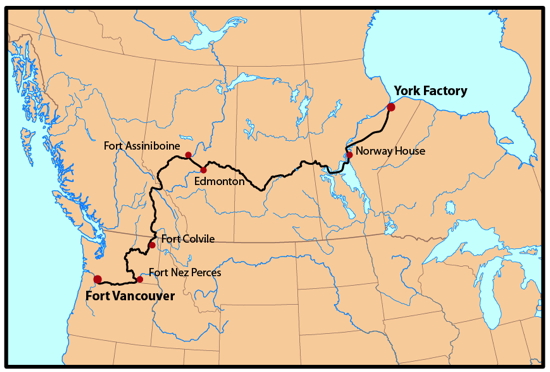
York Factory Express,1820s to 1840s, via Wikipedia Commons
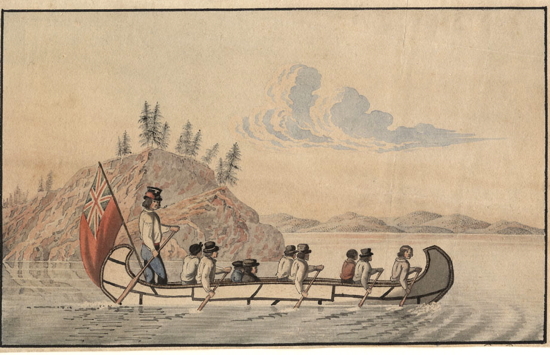
Hudson's Bay Company officials in an express canoe crossing a lake. Employés de la Compagnie de la Baie d'Hudson traversant un lac en canot. Voyageurs were generally contracted employees who worked as canoe paddlers, bundle carriers, and general laborers for fur trading firms. They were also known as engagés, or employees. The voyageurs were French-Canadian, Métis, English, Scottish and First Nations. Les voyageurs furent engagés par contrat comme pagayeurs, porteurs et travailleurs manuels pour le compte des entreprises de traite des fourrures. Les voyageurs étaient également aussi connus sous le nom d'« engagés », ou des « employés ». Les voyageurs étaient des Canadiens-français, des Métis, des Anglais et des Premières nations. Peter Rindisbacher, LAC C-150743, ca. 1825
"Philanthropy is not the object of our visits to these Northern Indians."
George Simpson, 1821
"The Hudson's Bay Company is simply a mercenary Corporation; there is not an officer in it with a soul above a beaver skin."
David Douglas, 1827

Governor Simpson of the Hudson's Bay Company approaching a fort on his tour of inspection, Cyrus Cuneo, artist, courtesy CPR, 1910?
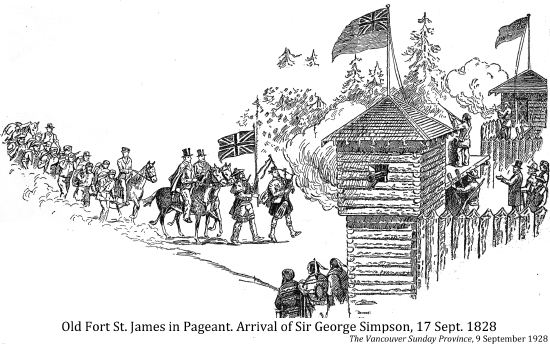
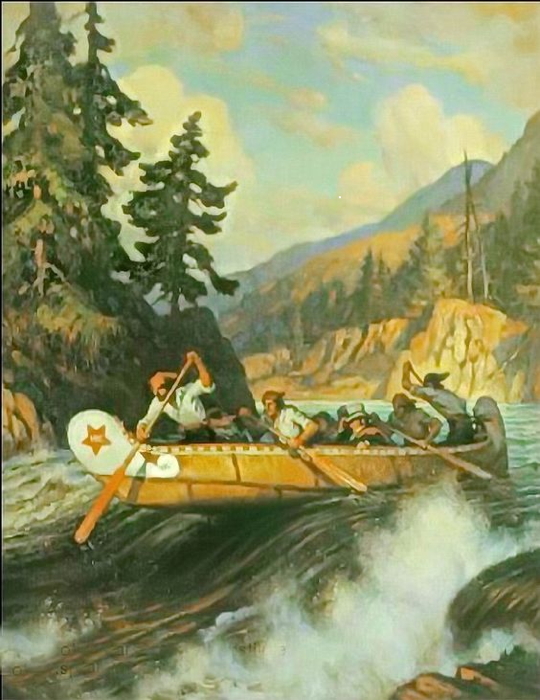
Governor George Simpson and Chief Trader Archibald descending the Fraser River, Hudson's Bay Company Archives, Adam Sherriff Scott, ca. 1942
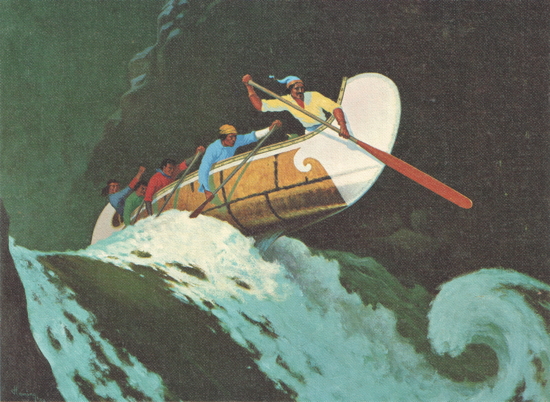
Canadian Express, 1920? by Arthur Heming
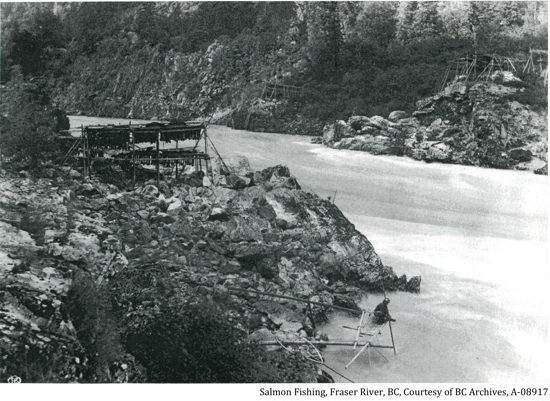
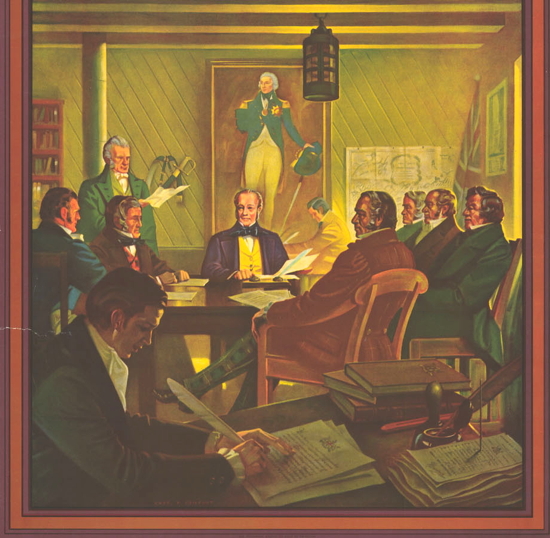
The Council of the Northwest Department of Ruperts' Land meeting at Norway House, June 21st, 1836, LAC, R13133-110, 1936. The men depicted are, left to right: John Charles, Chief Factor; Peter Warren Dease, Chief Factor; Allan McDonell, Chief Factor; Sir George Simpson, Governor; Donald Ross, Chief Factor; John Rowand, Chief Factor; Richard Grant, Chief Trader; William Todd, Chief Trader. In the left foreground and in the background are the two clerks.

The SS Beaver steamship operated off the coast of BC from 1836-1888. The SS Beaver in Burrard Inlet, BC Archives A-00009, 1888
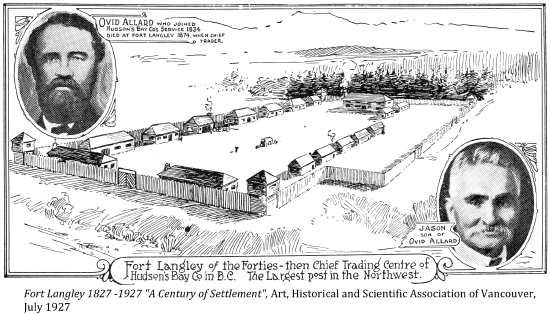

Fort Garry, Winnipeg. LAC, Acc. No. 1969-4-35, Henry James Warre ca. 1848


A boat brigade setting out from Fort Edmonton in 1825 on its annual trip down the Saskatchewan River to York Factory, J.D. Kelly, 1949
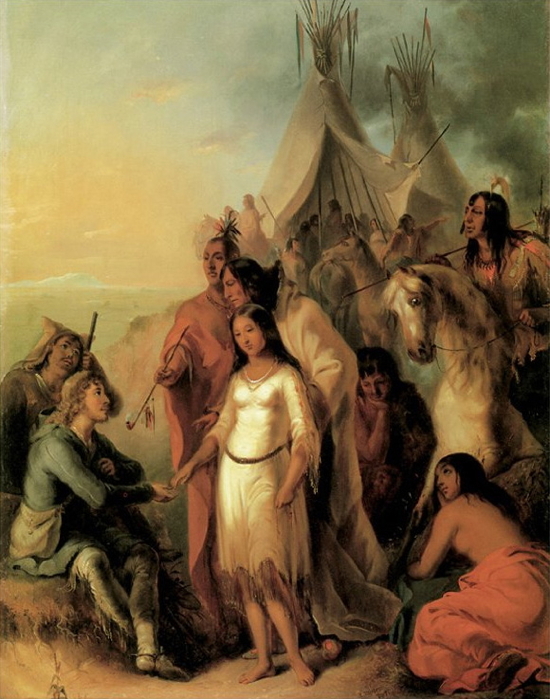
Trapper's Bride, Alfred Jacob Miller
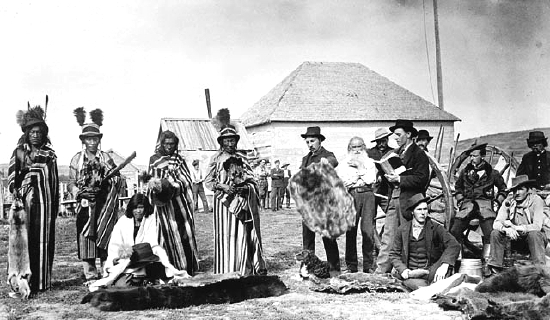
The HBC men traded for bison meat, pemmican and hides or robes at Fort Pitt. LAC, PA-118768, Oliver Buell, 1884
"By marrying into the indigenous world, most of the newcomers were marrying up. They were improving their situations, politically and economically. . . The HBC built its networks – for more than 200 years one of the world's largest commercial and political structures – in good part through interracial marriages."
John Ralston Saul, A Fair Country

York boats on the Saskatchewan River. PA-017395, 1912
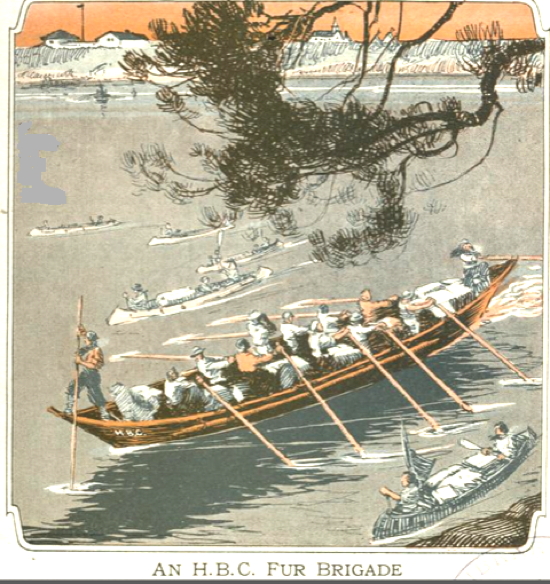
The Beaver, Winnipeg, July 1921

The York Boats, The Drama of the Forests, Arthur Heming, 1921
[York boats were stronger than canoes and could carry over 4,000 pounds.]
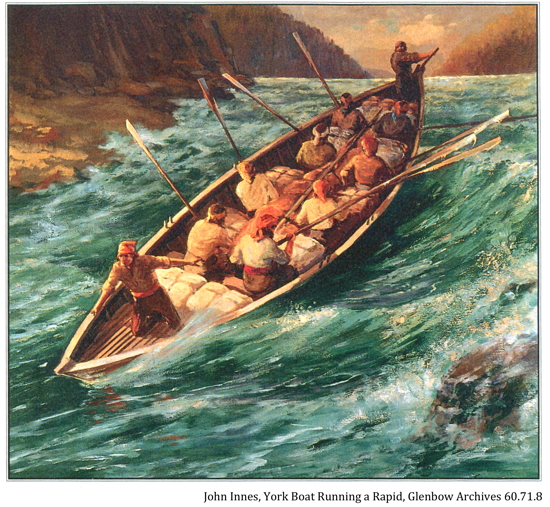
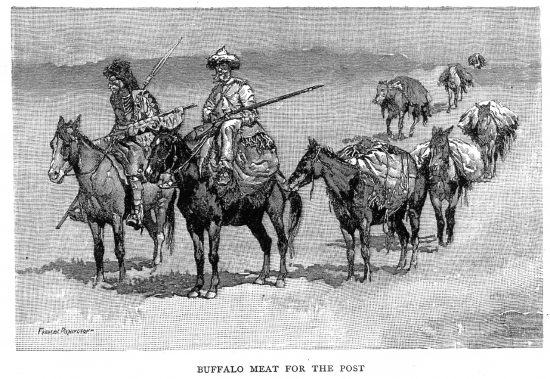
On Canada's Frontier, Julian Ralph, 1892 (illustrations were prepared for Harper's Magazine)

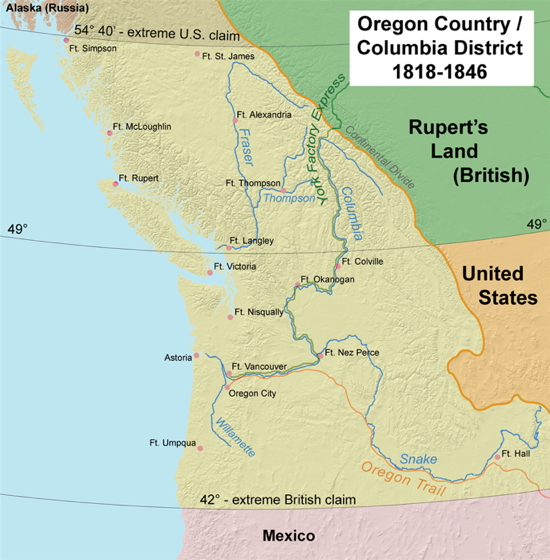
Oregon country, Kmusser, CC BY-SA 2.5 <creativecommons.org-licenses-by-sa-2.5>, via Wikimedia Commons

Hauling a boat up a rapid., likely the Columbia River. Halage d'un canot dans un rapide. LAC, Henry James Warre ca. 1846
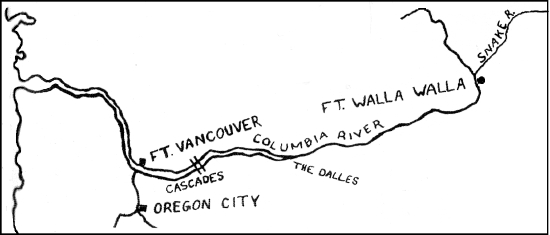
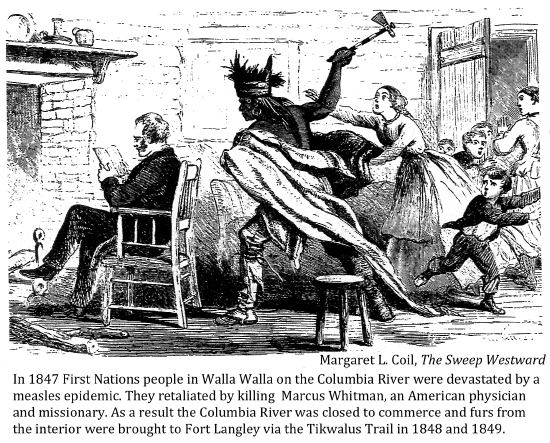

The Rocky Mts. from the Columbia River. LAC, Acc. No. R9266-1198 Peter Winkworth Collection of Canadiana, Henry James Warre 1848

Fort Vancouver. LAC, 1969-4-31, Henry James Warre 1848
From 1805 to 1825 furs were transported from Fort St. James to Montreal. From 1826 to 1847 they were transported by canoe or bateau from Fort St. James to Fort Alexandria, then by horse to Fort Okanagan on the Columbia River and by bateau to Fort Vancouver at the river's mouth.
In 1848 and 1849 they were transported to Fort Kamloops and then to Fort Yale and Fort Langley. From 1849 to 1860 they were transported from Fort Kamloops to Fort Hope and then to Fort Langley.
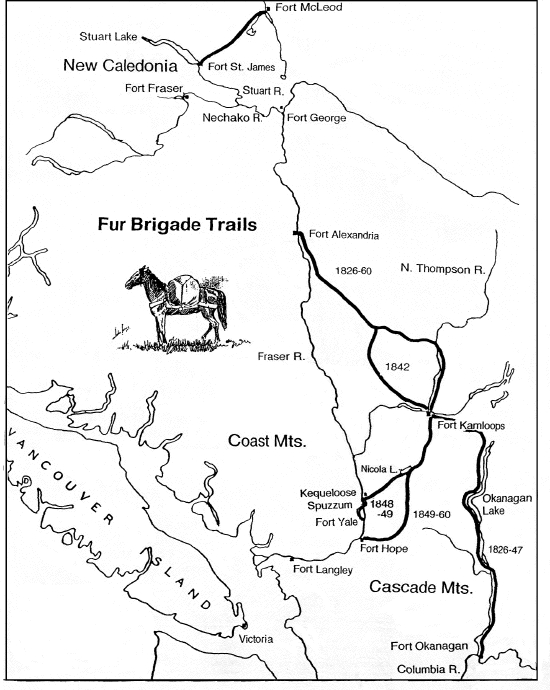
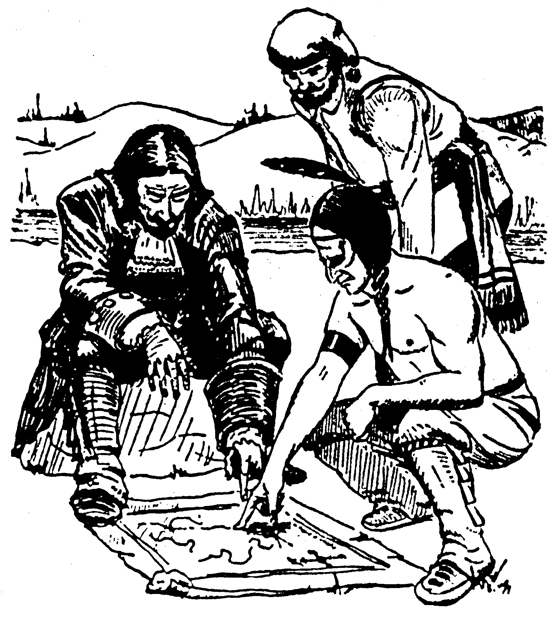
The Globe and Mail 25 October 1954
"It is a well-known circumstance that the Indian trails throughout North America invariably follow the best line of travel through a wild country."
Henry Spencer Palmer, Royal Engineer Report on the Harrison-Lillooet Trail, 1859

Indian group at Boston Bar, 1863-1867, LAC C- C-088948

Williams Lake Indians, 1865, Edward M. Richardson, LAC C113019
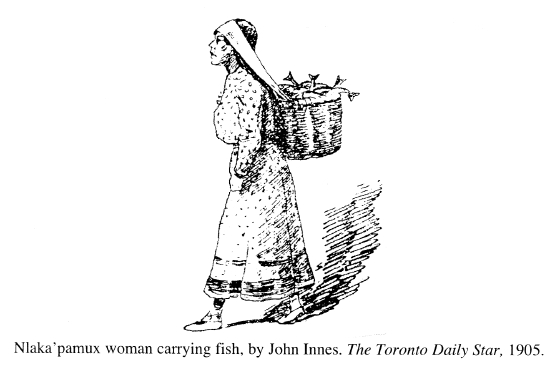
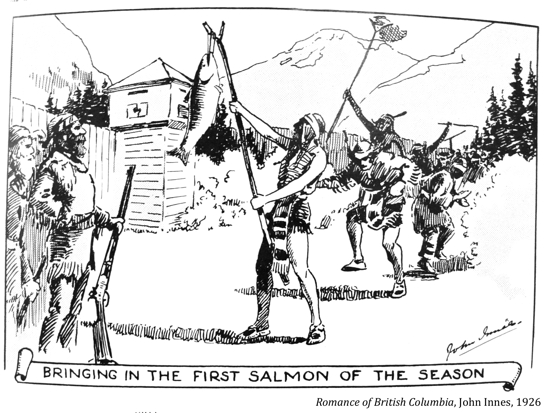

Nlaka'pamux woman and child by John Innes, The Toronto Daily Star, August 1905
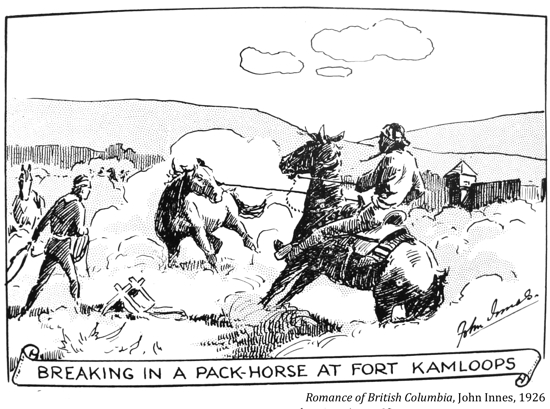

HBC Fur Brigade, Native Sons of BC, SFU
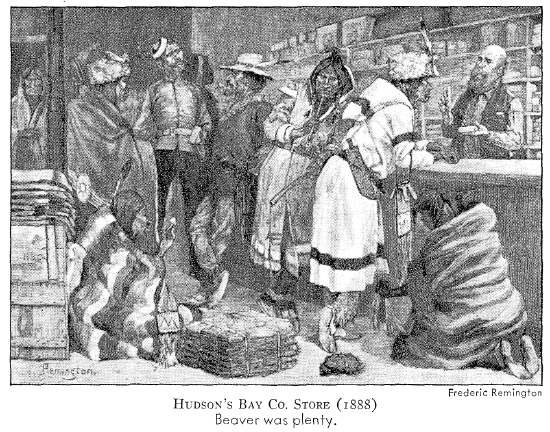

At the Portage, Hudson's Bay Company's Employees on their annual expedition, Picturesque Canada, 1882
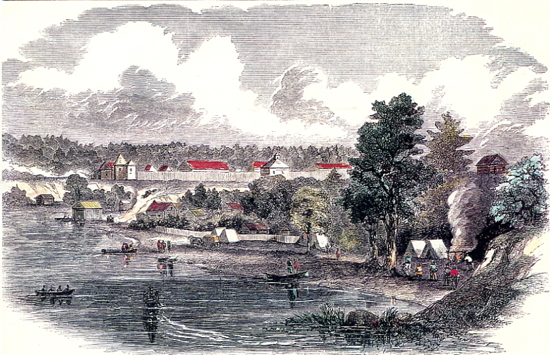
Fort Langley, Frazer's River, Harper's Weekly, 9 October 1858
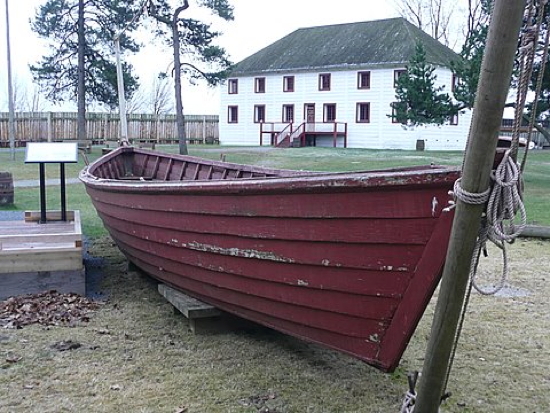
Replica of a bateau used to carry freight between Fort Yale and Fort Langley,
Fort Langley National Historic Site, Tony Cox photo
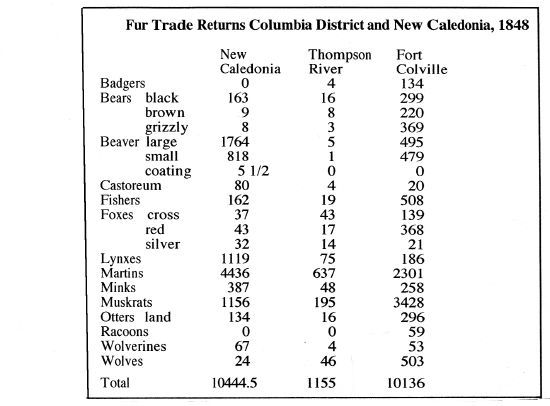

"Canada is a nation that was 'an extractive company' before it was a nation."
Naomi Klein
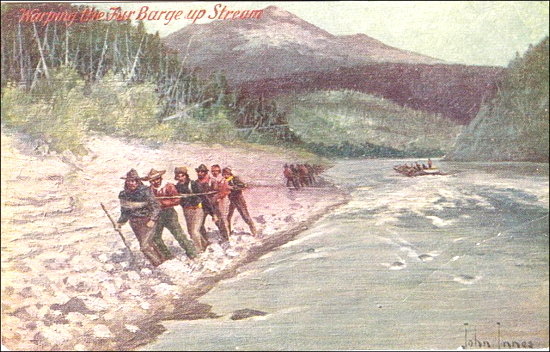
Henry John Moberly, When Fur Was King, drawn by John Innes, 1929
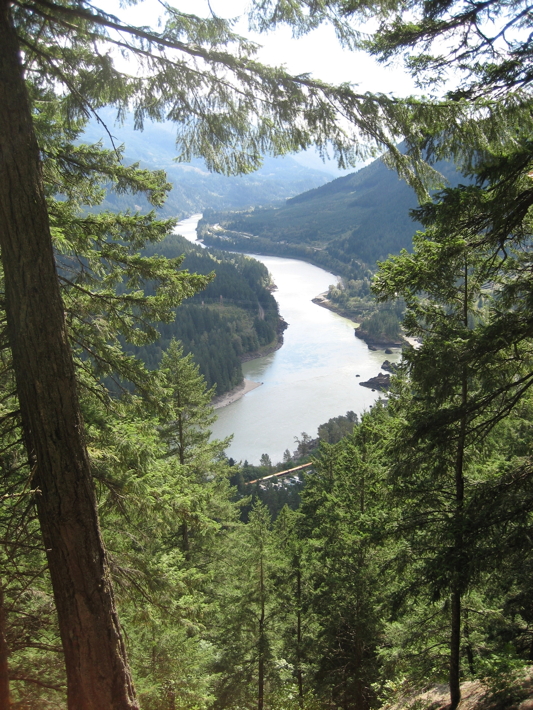
Fraser River south of Yale
"I listen to the river.
The river, not the money
not the trains.
The river is the heart
of countries."
Ross Spratt, 1977
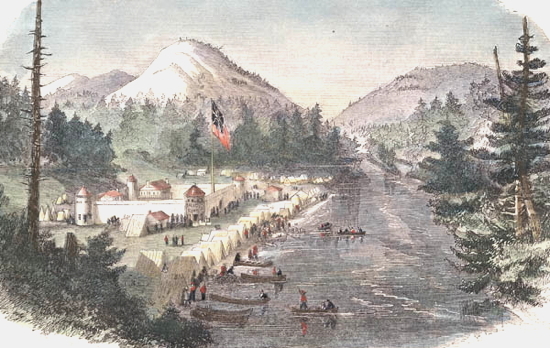
Fort Yale, 1858, LAC e002291379
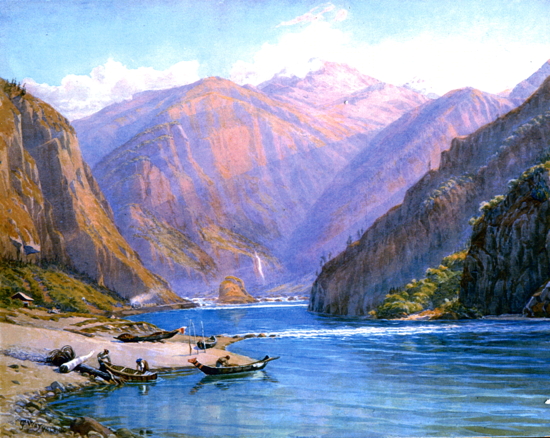
Yale 1898 Charles Jones Way, BC Archives PDP 00172

Yale, Charles Jones Way, 1898

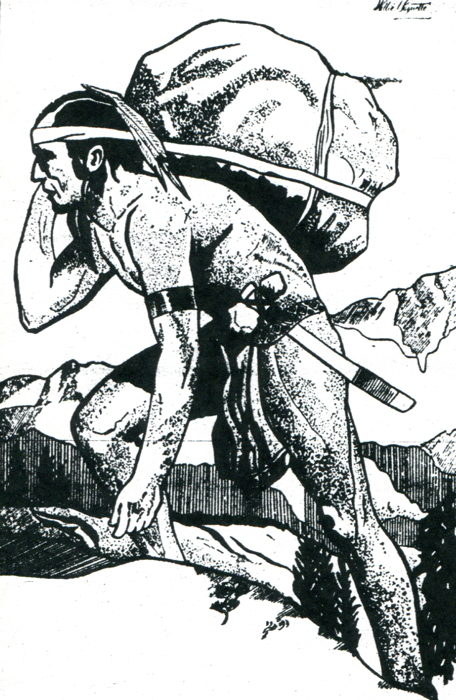
Le Miroir, Montreal, July 1932
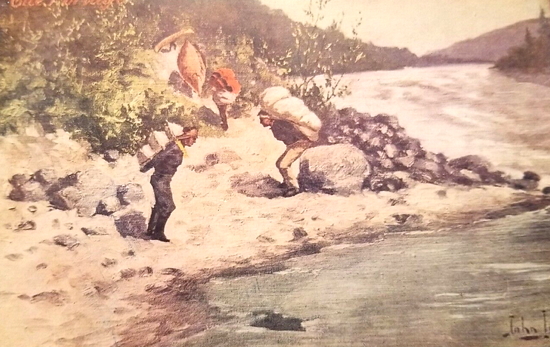
Portage, John Innes
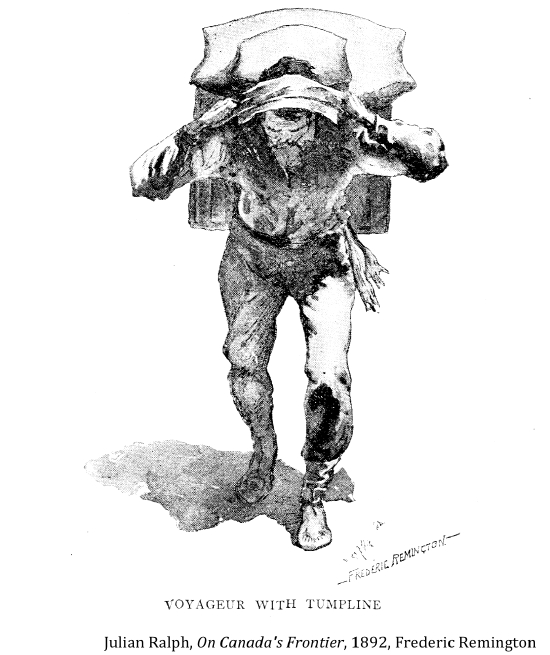

Scow running the Grand Canyon in the Fraser River, Trailmakers of the Northwest, Paul Leland Haworth, 1921
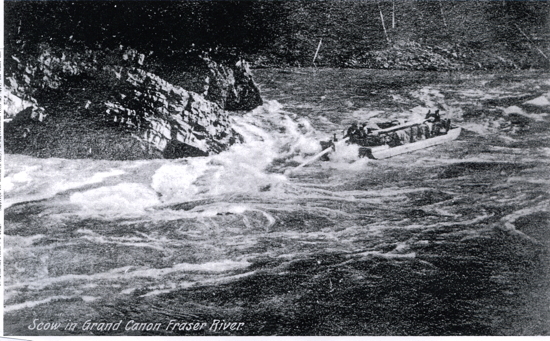
Scows like this one were used to freight furs supplies and men across the Fraser River at Spuzzum, n.d. Image B-00329 courtesy of the Royal BC Museum, BC Archives

Swimming horses across a river, Frank Cyril Swannell, BC Archive F-07907
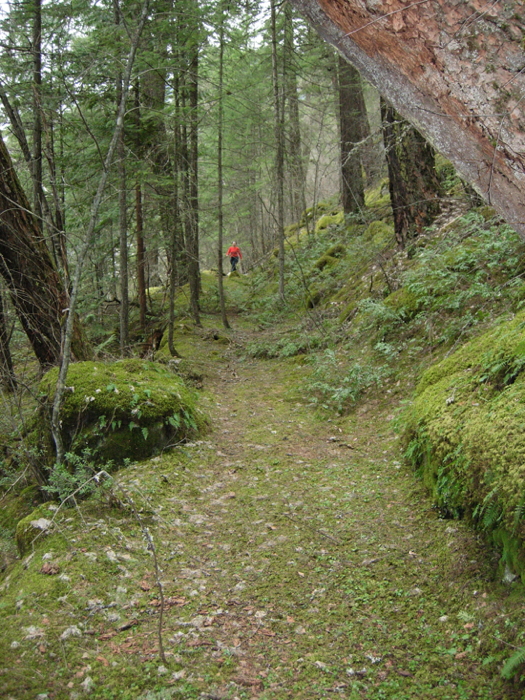
From Spuzzum to Keeqeloose (start of the Tikwalus Trail)
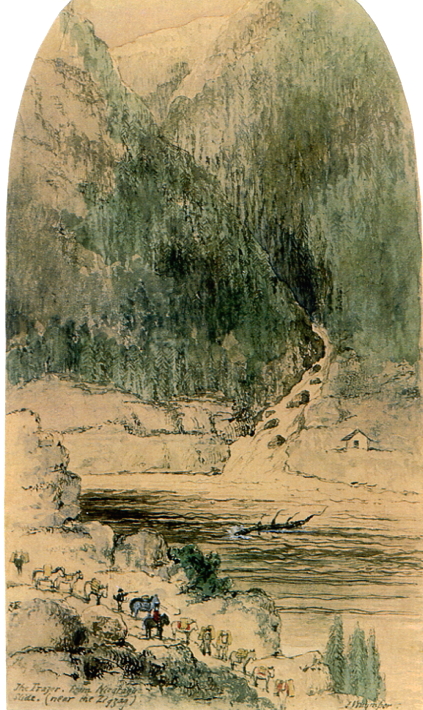
The Fraser Canyon by Frederick Whymper, 1863?, Image PDP00107 courtesy of
Royal BC Museum, BC Archives
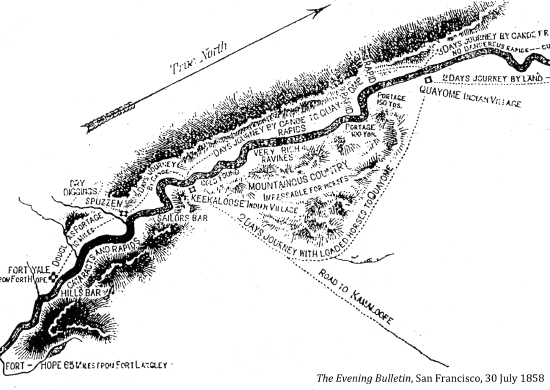

First Nation's chief's grave near Keequeloose Indian Village, Fraser River, start of the Tikwalus trail to Kamloops, Frederick Dally, BC Provincial Archives C-09270, 1866—1870

Indians encamped. Indian hut at Keekaloose Indian Village, Fraser River [Chapman's Bar, Alexandra Lodge]. Frederick Dally, BC Provincial Archives MS-3100.11.37, 1866-1870
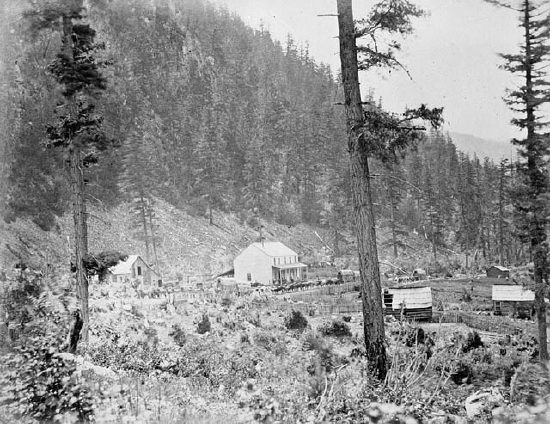
Area near Keekaloose Indian Village, Fraser River [Chapman's Bar House (Alexandra Lodge)]. Frederick Dally, BC Provincial Archives A-03865, 1866-1870
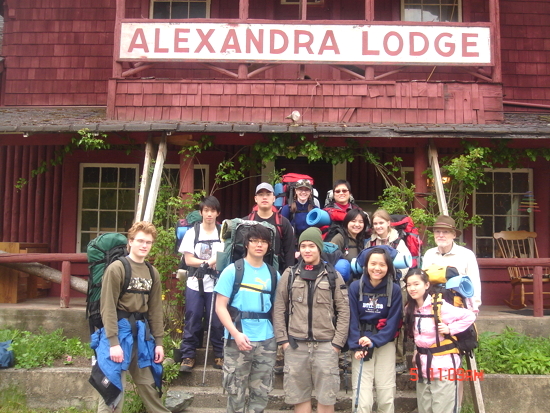
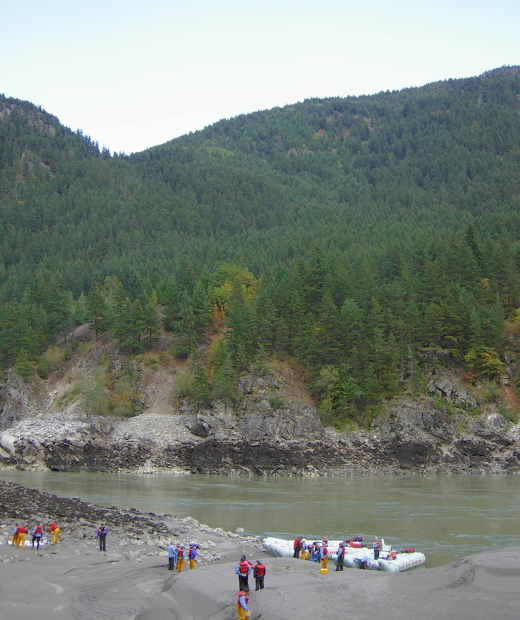
Trail from Keequeloose [Alexander Lodge] to Kamloops, on the other side of the river.
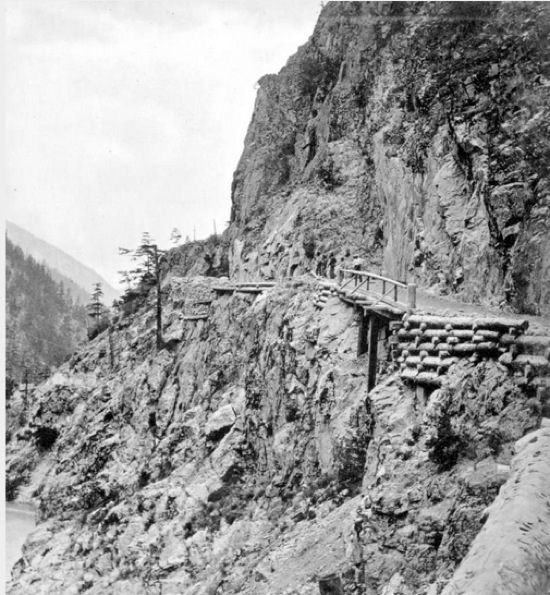
Fraser Canyon North of Keequeloose (Cariboo Wagon Road), Frederick Dally, BC Archives D-08064, 1868
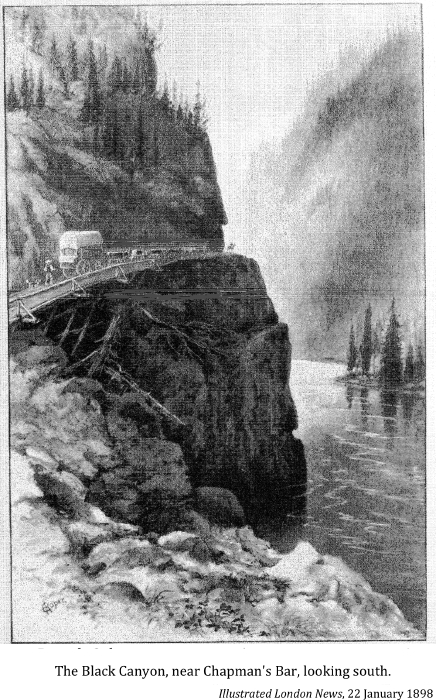
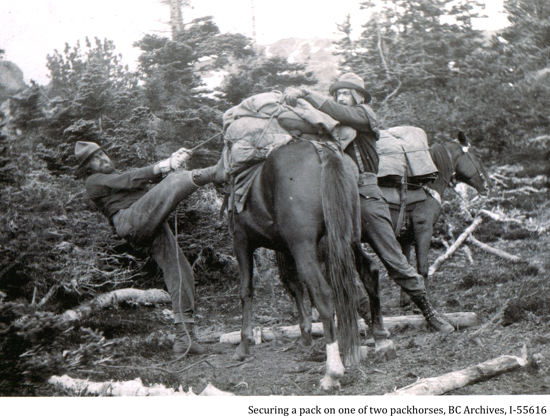

Pack Pony with Pack, The Toronto Daily Star, 28 October 1905

Packhorses on the trail, courtesy of BC Archives, I-61673
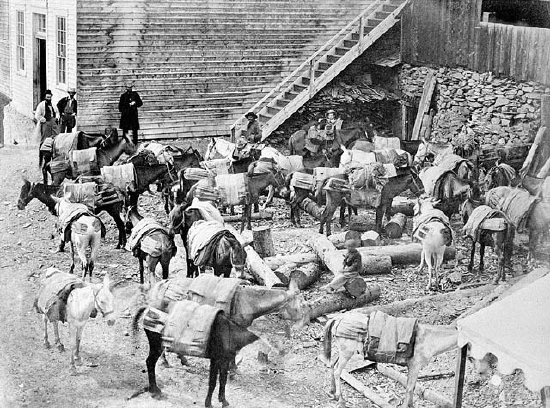
Pack mules resting - way to Cariboo Mines. LAC C-001130A, 1867

Cataline – Most famous of all old Cariboo pack-train bosses,
The Vancouver Daily Province. 27 September 1925

On Canoe Creek Mountain, 1864, Edward M. Richardson, LAC e010857461
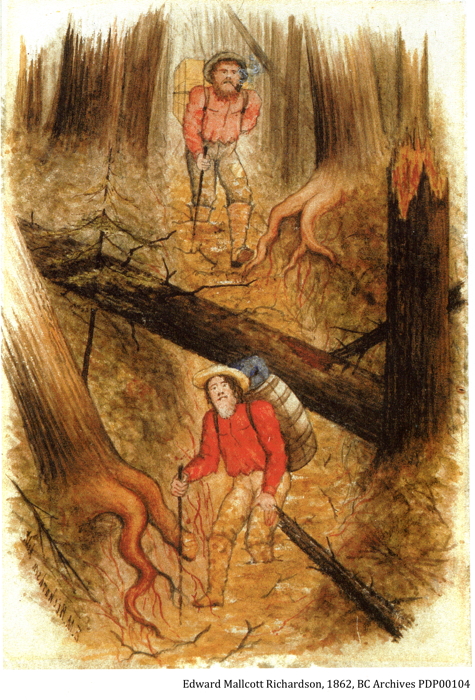


William Hind, Pine Forest, British Columbia, McCord Museum

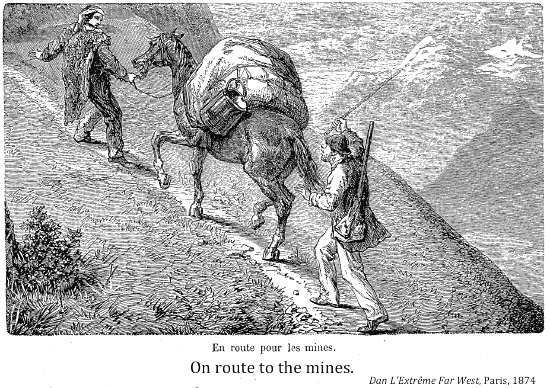


Students hiking on the Tikwalus Trail (1848-49 brigade trail).

Students hiking on the Tikwalus Trail (1848-49 brigade trail).
"History should be learned through the soles of your feet."
Harley Hatfield
"The tug of history is very strong when you find yourself within the setting."
Charlotte Gray
"Experience things not found in textbooks."
Lolehawk Laura Buker
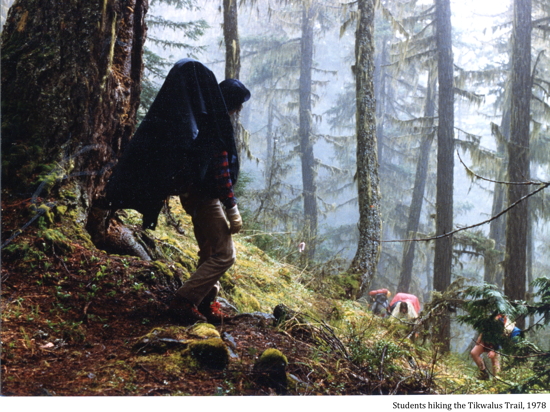
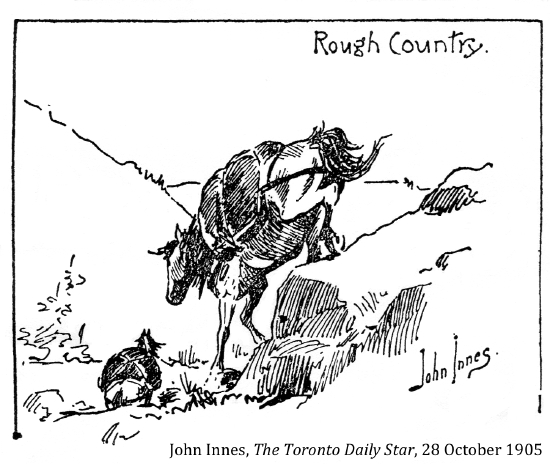

Culturally modified tree


William Hind, Scene in BC, McCord Museum

The Supply Train over the Mountain, On Canada's Frontier, Julian Ralph, 1892
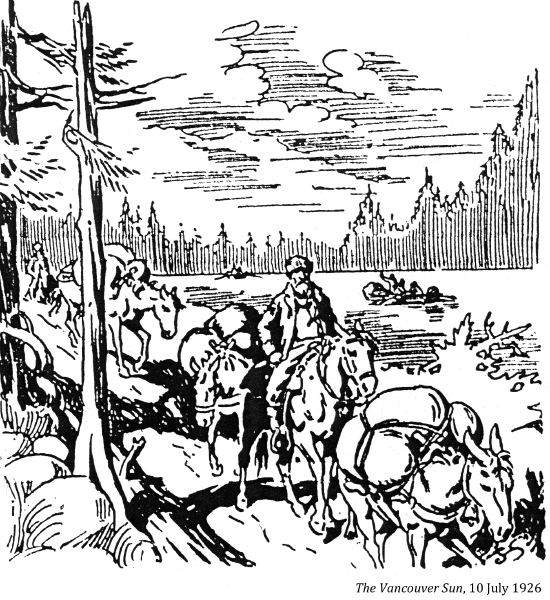

Backcountry Horsemen of BC (http://www.et2media.com/806-2/)
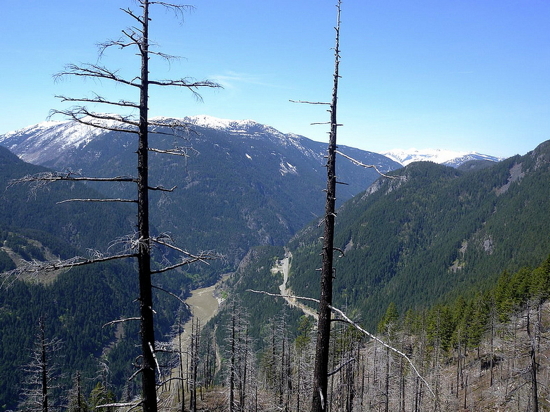
View of the Fraser Canyon looking north from Lake Mountain campsite

William Hind, 1864, BC Archive PDP00017_141

View of the Fraser Canyon looking south from Lake Mountain campsite

One of seven small lakes on top of Lake Mountain

Harper's New Monthly Magazine, December 1860
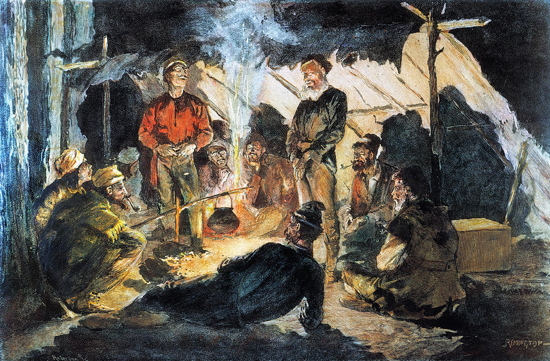
Julian Ralph, On Canada's Frontier, 1892
"What a sauce open air sleeping, open air exercise, bathing, and a large ingredient of hunger makes."
Mark Twain
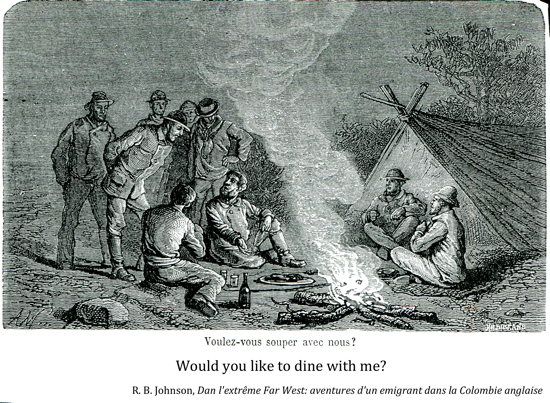

Our Camp, Harper's New Monthly Magazine, April 1860

Harper's Weekly, New York, 21 Mar 1883

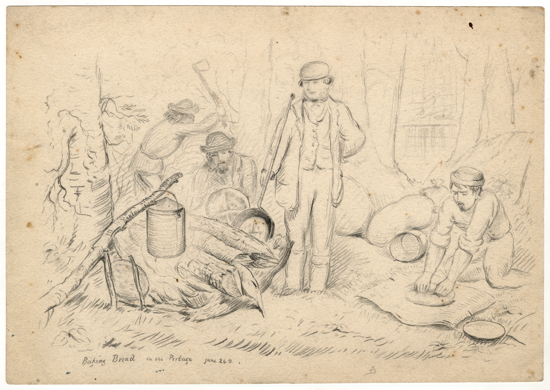
Making Bannock McCord Museum

Cooking in the Woods. William G. R. Hind, 1861, LAC Acc. No. 1974-52-26
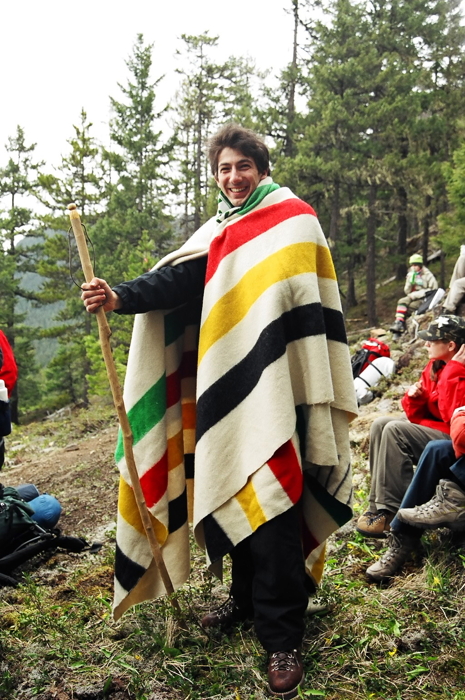
2000
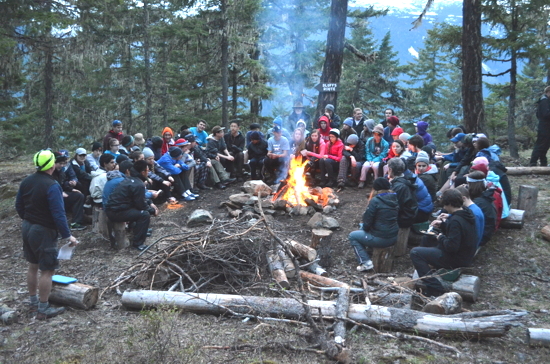
Lake Mountain camp site
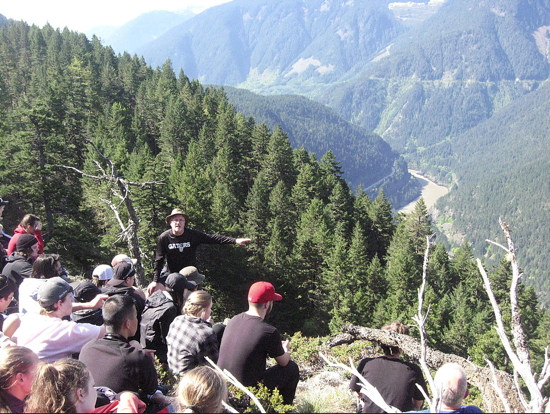
Looking South from the Tikwalus Trail 2017
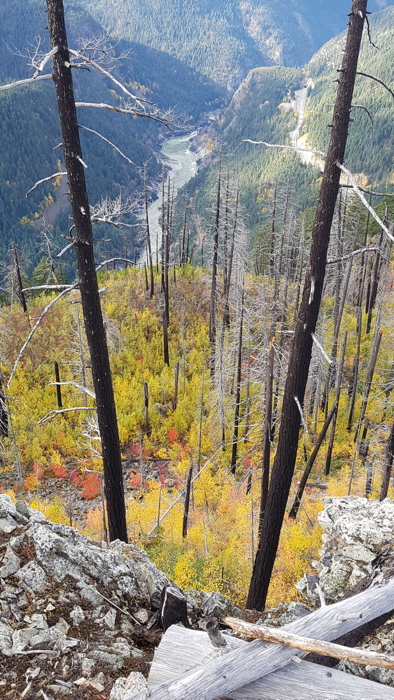
Looking North from the Tikwalus Trail 2017

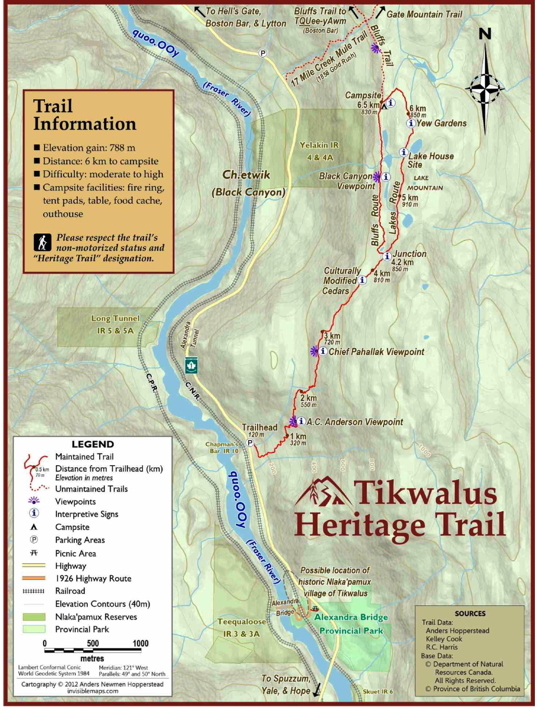

A. C. Anderson 1858
"At the peak of its expansion it controlled nearly three million square miles of territory – nearly a twelfth of the earth's land surface and an area ten times that of the Holy Roman Empire at its height."
Peter C. Newman, Empire of the Bay, An Illustrated History of the Hudson's Bay Company, 1984
"The territory of the H.B.Co. . . was an area of peace and order . . . On the American side of the line, violence and murder were the order of the day."
Frederick Merk
Link to "Tikwalus Trail 2013" website
Link to "Tikwalus Heritage Trail Hope Mountain Centre" website
Link to " Just Over the Mountain - Kwantlen Polytechnic University" website
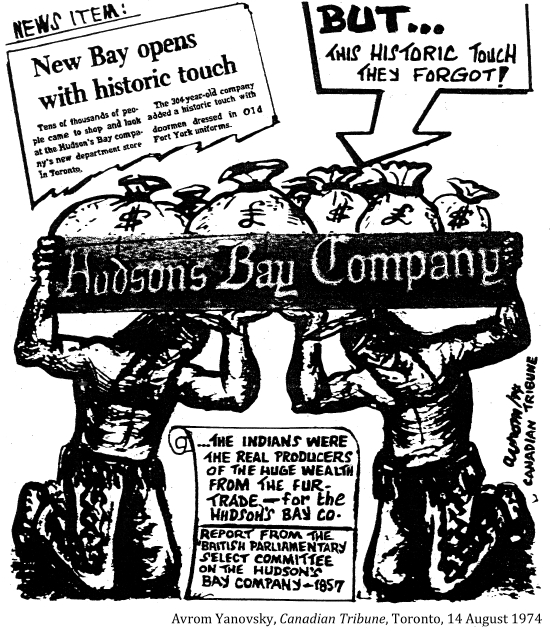

1860 Donald Smith (HBC chief trader) at North West River. LAC, Acc. No. 1988-245-1 William Hind 1860

Harper's New Monthly Magazine, August 1860
[The first steamboat on the Red River reached Fort Garry in June 1859. Trade with the United States provided by the Red River cart and steamboat were more efficient than the Hudson's Bay route. In the 1870s the steamboat on the prairies replacee moving furs by canoe, cart and the York boat on the major lakes and rivers of the prairies.]

Gwich'in woman cleaning a hide, 1889-1942, LAC Edward Martin Kindle collection C-053224
"Canada emerged as a political entity with boundaries largely determined by the fur trade. . . The present Dominion emerged not in spite of geography but because of it."
Harold Innis

Colin Fraser, trader at Fort Chipewan, sorting his black fox pelts from his lot of 35,000 dollars worth of fur, 1890-1900, Unknown photographer, LAC Ernest Brown fonds, e011303100-012_sl
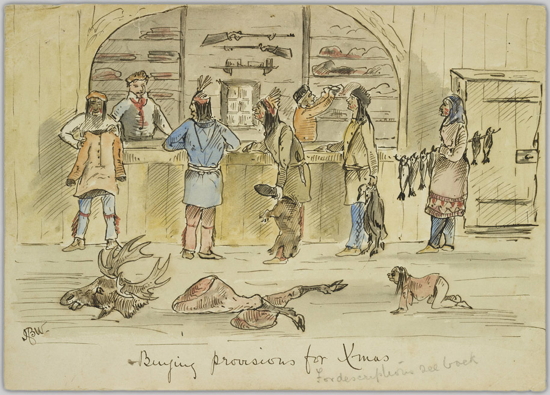
Rare Books and Special Collections UBC, 1874

Rare Books and Special Collections UBC, 1874
“For more than 200 years, all visitors including Chiefs, explorers, adventurers and traders . . . were regaled with a ‘Halfbreed Ball’ upon arriving or departing a Métis community. They feasted and danced when the buffalo brigades met on the prairies and when the York boat bridgades arrives. Sometimes they danced on the prairie around a campfire, the dirt floor of a large log cabin or a frontier ballroom. The dances were always referred to as ‘aen ball Metif’ or a ‘Halfbreed ball’ and all you needed was a space, two or three or four fiddle players, and people who could ‘step’ and they would dance until their moccasins wore out.”
Invitation, Native and Indigenous Studies Association, University of Saskatchewan conference

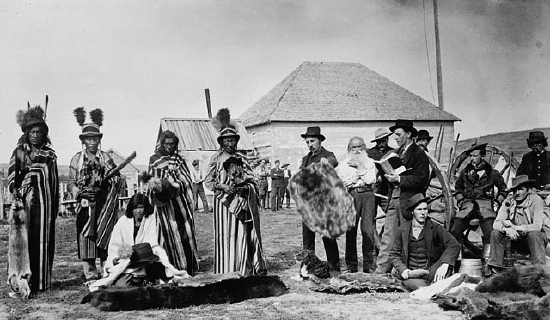
1884 Mistahi maskwa (Big Bear ca. 1825-1888), a Plains Cree chief, trading. LAC, PA-118768, Oliver Buell 1884
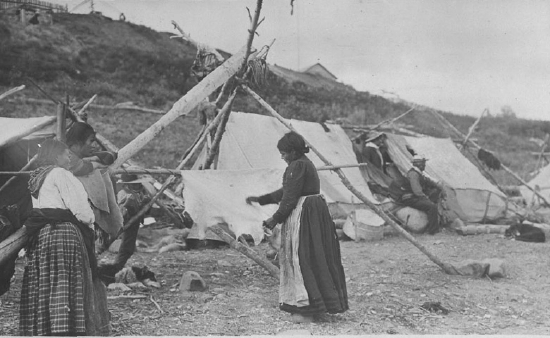
1900 Indian women scraping and stretching deer skin, North West Territories. LAC, PA-047987, 1900?

Company trader buying white fox furs and other skins from an Eskimo at a Revillon Freres post, Library of Congress LC-USZ62-112764, between 1900 and 1930
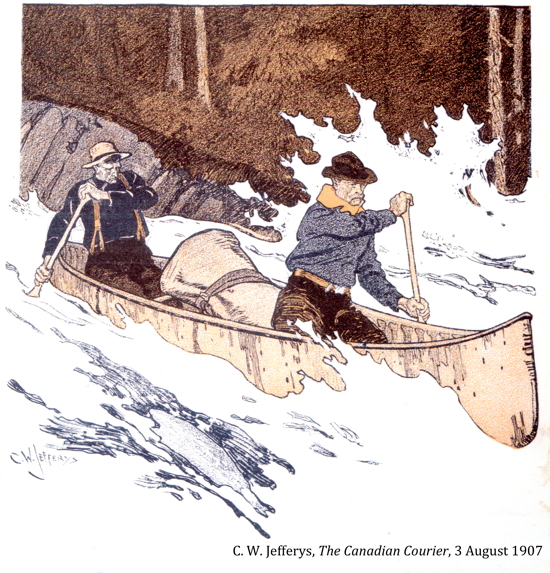

Will Crawford, Puck, New York , 8 June 1910, Library of Congress LC-DIG-ppmsca-27638

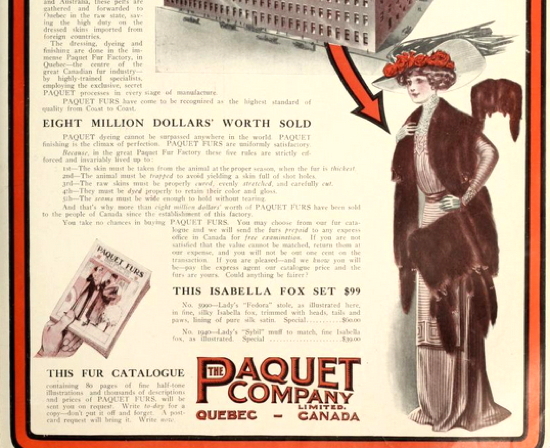
Canadian Home Journal, Toronto, October 1911

1922 Old fur baler, [Fort] Norman, N.W.T. LAC, PA-102571, J. F. Moran 1922

1900 Trappers' Outfitting. LAC, PA-031750, 1900-1925
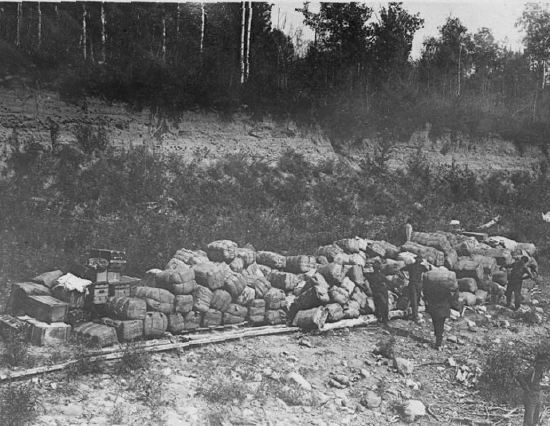
1900 1 1/2 million dollars worth of furs ready for shipment by scows from McMurray to Waterways, Alta. LAC, PA-046084, 1900
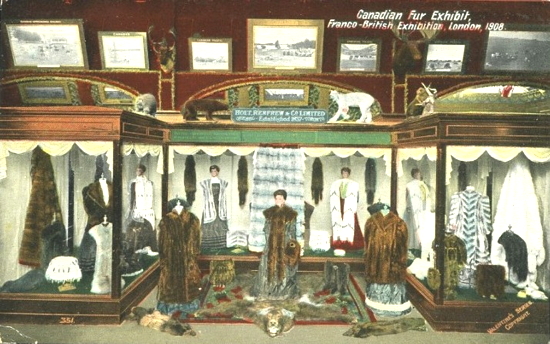
Holt Renfrew & Co Limited Franco-British Exhibition, London 1908, Valentine's Series, Public domain, Wikipedia Commons
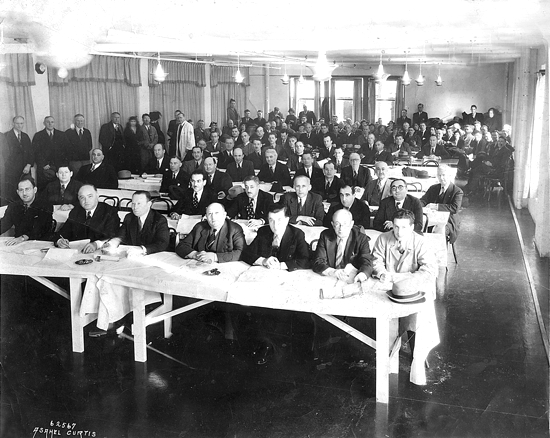
Buyers at a Montreal fur auction, early 1920s, Asahel Curtis, Public domain, via Wikimedia Commons
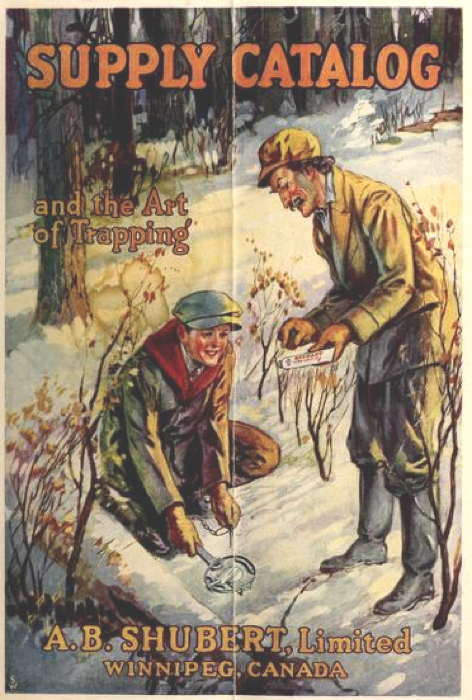
The Art of Trapping, Winnipeg
"The present Dominion emerged not in spite of geography but because of it."
Harold Adams Innis, The Fur Trade in Canada, 1930

28 June 1948, National Archives of Québec

1950 Angulalik and his family at Perry River (Kuugjuaq), Nunavut. [Left to right: Mary Posoktok, Margaret Kuptana, Mabel Ekvana holding baby Lena Tuiligakyok]. LAC, PA-175729, S. J. Bailey 1950

1975? Seals and Sealing. LAC, Acc. No. 1983-33-1612, 1975?
https://www.nfb.ca/film/angry_inuk/?utm_campaign=435456_NFB_Films_2018-08-31_School&utm_medium=email&utm_source=NFB-All_Users
|



































































































































































































